Another Bouncing Ball: September 2010 Archives
Lundin is represented in Seattle by Francine Seders Gallery, where his exhibition, Gray Light: Four Years of Painting, continues through Oct. 3. (My review here.)
Lundin, Arctic River at Night oil / canvas, 2010 24 x 36"
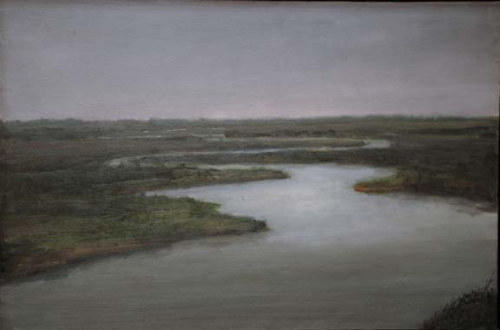 The title of Lundin's new venture is Prographica: Fine Works On Paper.
The title of Lundin's new venture is Prographica: Fine Works On Paper.Lundin:
I am developing it in association with Francine Seders. Also, the Koplin Del Rio Gallery in LA, which has represented my work for many years. Both galleries are helping me get up and running; they've given me practical advice, offered me their mailing lists as well as their considerable marketing savvy The gallery will specialize in contemporary drawings, photography, and other fine works on paper.Yoder was represented in Seattle by Howard House.He opens at Frosh&Portmann in New York Oct. 7.
The art will range from straightforward traditional realism to work that is quite abstract. Of the artists represented some will have substantial professional achievement, there will be too, those artists whose reputations are emerging. I am aiming toward an opening in November; the first show will be a group one. This show will be important, as it will be the exhibition that gives the gallery its character. Launching a gallery in the current economy is a chancy undertaking to be sure.
I have, though, sufficient funding to get the gallery off the ground and through the first couple of years, which may indeed be lean. The address is: 3419 East Denny Way, Seattle 98122. I should add that my own work will not be represented by the gallery.
Yoder Front Loading collage, 2010, 11 x 8.5 inches
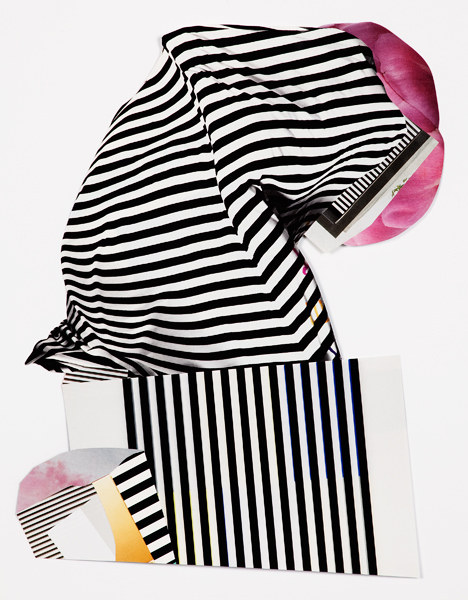 Yoder's motivation for opening his space is to offer more of the work he'd like to see in Seattle but doesn't, save for shows at Ambach & Rice and a few others, art that he thinks isn't quite as safe as what's usually on offer. Like Lundin, Yoder will not show his own work.
Yoder's motivation for opening his space is to offer more of the work he'd like to see in Seattle but doesn't, save for shows at Ambach & Rice and a few others, art that he thinks isn't quite as safe as what's usually on offer. Like Lundin, Yoder will not show his own work. Yoder:
It is with great pleasure that I announce the opening of SEASON on Sunday Oct 17 from 2-5 pm. Season will host two solo shows four times a year at 1222 NE Ravenna Blvd, Seattle Washington.
The inaugural show - PARTY AND PARTY AND PARTY AND FUCK AND PARTY - will feature watercolors by Natalie Häusler and sculpture by Jesse Sugarmann. Häusler, born in Munich, Germany, resides in New York, New York. Sugarmann, born in Danbury Connecticut, resides in Eugene, Oregon.
Schwarzer Rock 2010 Dual panel C-print, 11.75" x 9.25"
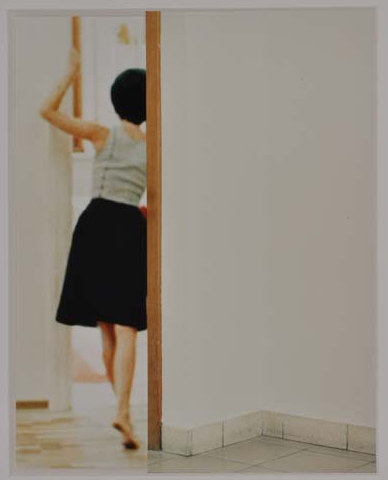
From diverse moments she makes a mood. If Schwarzer Rock features a sleep-walking Cindy Sherman-type from the black-and-white film stills, Teppich sets the kind of scene an amnesiac might wake up in, her memories elusive but her feelings intact.
Teppich 2006 Dual panel C-print behind Plexiglas, 38.25" x 47.25"
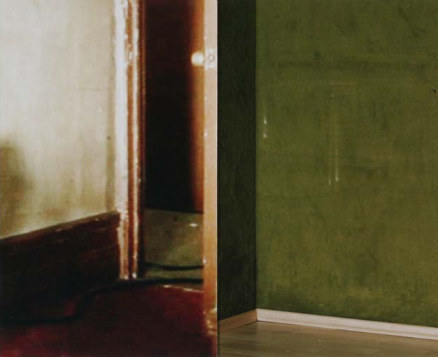 In Turundlandschaft, a door opens onto wallpaper in the artist's studio. It's a mountain with no cliffs of fall, available by the yard at a home decorating store. In a photo, already flat, Sauter could have restored a sense of volume. Instead, she took the Lynch road to lurid, cranking up the color of the ground. She has no wish to trick anybody, yet within her contrivances is a sense of the tragic.
In Turundlandschaft, a door opens onto wallpaper in the artist's studio. It's a mountain with no cliffs of fall, available by the yard at a home decorating store. In a photo, already flat, Sauter could have restored a sense of volume. Instead, she took the Lynch road to lurid, cranking up the color of the ground. She has no wish to trick anybody, yet within her contrivances is a sense of the tragic.
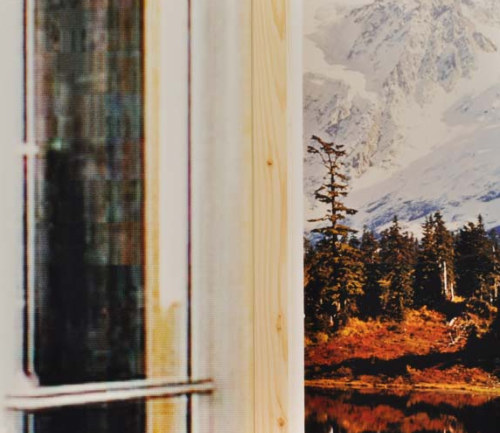 On the left in Hofmauer, brick from the artist's backyard. In the center, an alley from Hitchcock. The blur of the blue throws the dark brick in high relief.
On the left in Hofmauer, brick from the artist's backyard. In the center, an alley from Hitchcock. The blur of the blue throws the dark brick in high relief.
Hofmauer 2006 Dual panel C-print behind Plexiglas 39" x 53 "
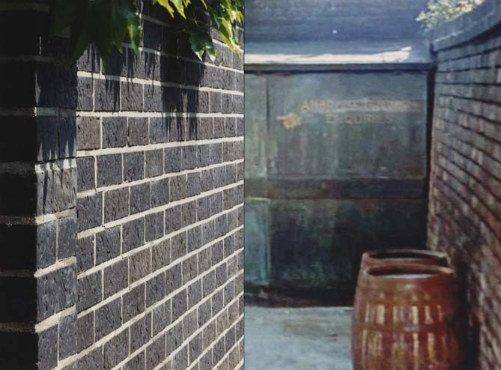 Sauter's Shapely Shadows and a New Apartment at Ambach & Rice through Oct. 31. She lives in Düsseldorf; this is her first solo exhibit in the U.S.
Sauter's Shapely Shadows and a New Apartment at Ambach & Rice through Oct. 31. She lives in Düsseldorf; this is her first solo exhibit in the U.S.
Teppich 2006 Dual panel C-print behind Plexiglas, 38.25" x 47.25"
 In Turundlandschaft, a door opens onto wallpaper in the artist's studio. It's a mountain with no cliffs of fall, available by the yard at a home decorating store. In a photo, already flat, Sauter could have restored a sense of volume. Instead, she took the Lynch road to lurid, cranking up the color of the ground. She has no wish to trick anybody, yet within her contrivances is a sense of the tragic.
In Turundlandschaft, a door opens onto wallpaper in the artist's studio. It's a mountain with no cliffs of fall, available by the yard at a home decorating store. In a photo, already flat, Sauter could have restored a sense of volume. Instead, she took the Lynch road to lurid, cranking up the color of the ground. She has no wish to trick anybody, yet within her contrivances is a sense of the tragic.Cold, impossible, ahead
Lifts the mountain's lovely head,
Whose white waterfalls could bless
Travelers in their last distress.
Auden - 1936
 On the left in Hofmauer, brick from the artist's backyard. In the center, an alley from Hitchcock. The blur of the blue throws the dark brick in high relief.
On the left in Hofmauer, brick from the artist's backyard. In the center, an alley from Hitchcock. The blur of the blue throws the dark brick in high relief.Hofmauer 2006 Dual panel C-print behind Plexiglas 39" x 53 "
 Sauter's Shapely Shadows and a New Apartment at Ambach & Rice through Oct. 31. She lives in Düsseldorf; this is her first solo exhibit in the U.S.
Sauter's Shapely Shadows and a New Apartment at Ambach & Rice through Oct. 31. She lives in Düsseldorf; this is her first solo exhibit in the U.S.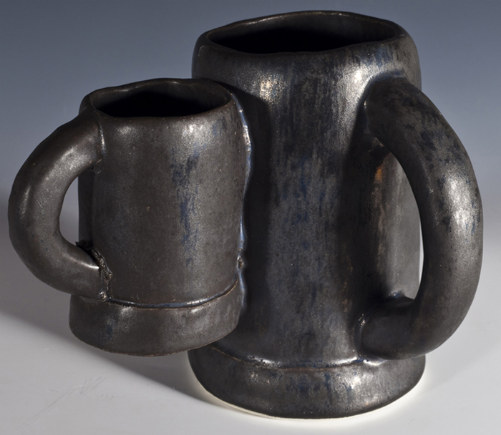 Watch the video here - driving drunk in honor of the dearly departed. Simi grew up in Newberry, Michigan, in a family full of prison guards - father, uncles, brothers. He's an artist in Seattle.
Watch the video here - driving drunk in honor of the dearly departed. Simi grew up in Newberry, Michigan, in a family full of prison guards - father, uncles, brothers. He's an artist in Seattle. Piotr Uklanski
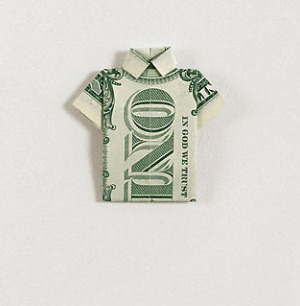 Few jobs are secure. You may do your able best, but you're still going to be fired. Then you'll hole up by yourself and think it's your fault. (Via I'm Revolting )
Few jobs are secure. You may do your able best, but you're still going to be fired. Then you'll hole up by yourself and think it's your fault. (Via I'm Revolting )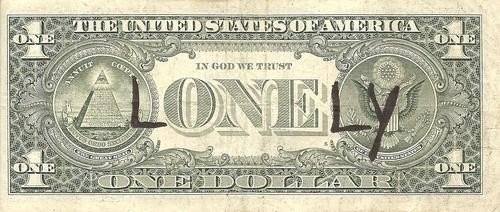 Even when artists make money, they don't make money. SuttonBeresCuller (Distribution of Wealth, 2009
100 uncirculated one-dollar bills cut to portray the percentages received by the artists and their dealer.
46 x 11 x 6 inches )
Even when artists make money, they don't make money. SuttonBeresCuller (Distribution of Wealth, 2009
100 uncirculated one-dollar bills cut to portray the percentages received by the artists and their dealer.
46 x 11 x 6 inches ) 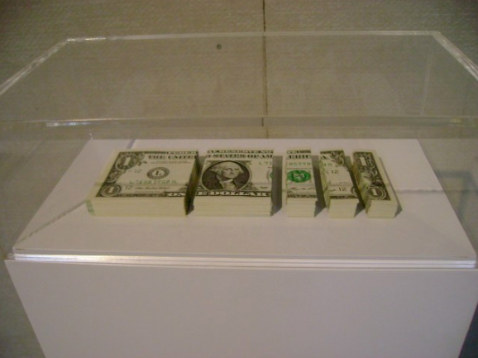 Of course there are exceptions, although most of the exceptions are dead. Andy Warhol's 1962 silk-screen painting 200 One Dollar Bills sold for $43.7 million at Sotheby's in 2009. (Image via New York Times)
Of course there are exceptions, although most of the exceptions are dead. Andy Warhol's 1962 silk-screen painting 200 One Dollar Bills sold for $43.7 million at Sotheby's in 2009. (Image via New York Times)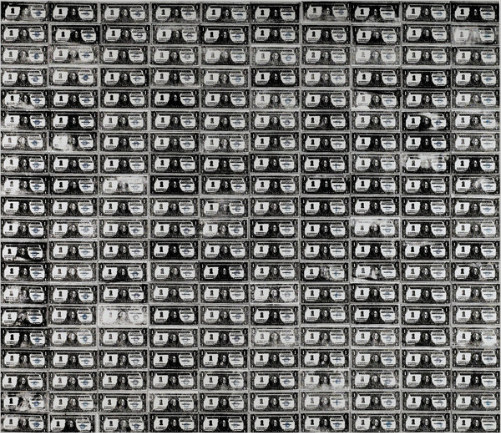 Tight as money is, collective action can make a difference. Mel Chin (Funded Dollar Bill)
Tight as money is, collective action can make a difference. Mel Chin (Funded Dollar Bill)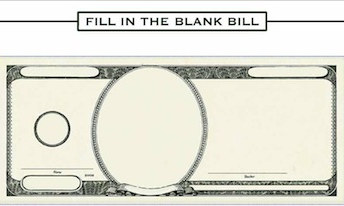 Inside a mess, there is always an opportunity. In 2007, Jack Daws instituted a penny upgrade, fabricating ten in gold. The
one he slipped into general circulation and never expected to see again
popped up two years later. (COUNTERFEIT PENNY, 2007
18-karat gold, copper plated, Edition of 10). (Stories here and here.)
Inside a mess, there is always an opportunity. In 2007, Jack Daws instituted a penny upgrade, fabricating ten in gold. The
one he slipped into general circulation and never expected to see again
popped up two years later. (COUNTERFEIT PENNY, 2007
18-karat gold, copper plated, Edition of 10). (Stories here and here.)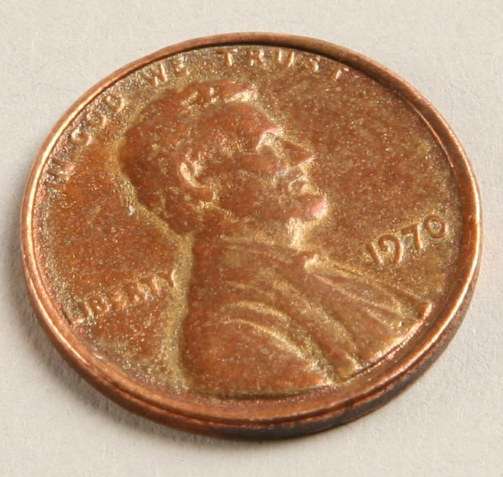 Finding a gold penny is once-in-a-lifetime discovery, and the one in our lifetimes has already been found. Back to out regular programming, where the rich get richer and everybody else gets the joker - Anonymous, in circulation.
Finding a gold penny is once-in-a-lifetime discovery, and the one in our lifetimes has already been found. Back to out regular programming, where the rich get richer and everybody else gets the joker - Anonymous, in circulation. 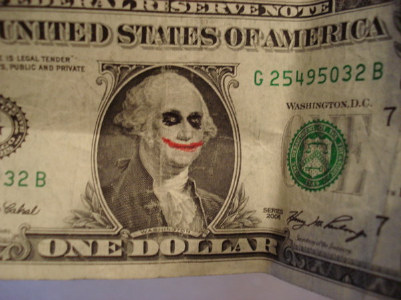
Eight years of George Bush and his cronies pushed us over the cliff. Now, the same people who put us there want to be sure we don't climb back. Maybe we should all light a sparkler and sing softly to ourselves, from sea to shining sea, to remind us of what's at stake.
Robin Williams
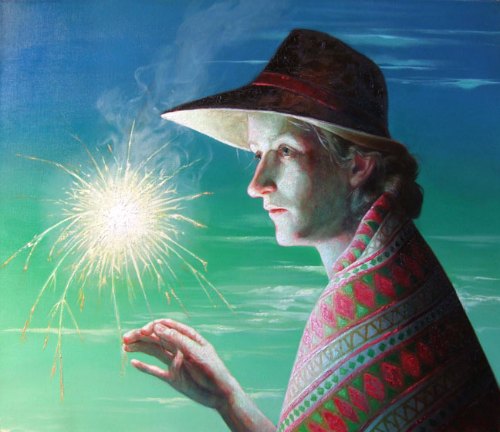
Robin Williams

Almost everyone I know who cares about art and lived in the Bay Area in the second half of the 20th Century considers his work a touchstone.
David Park (Image via)
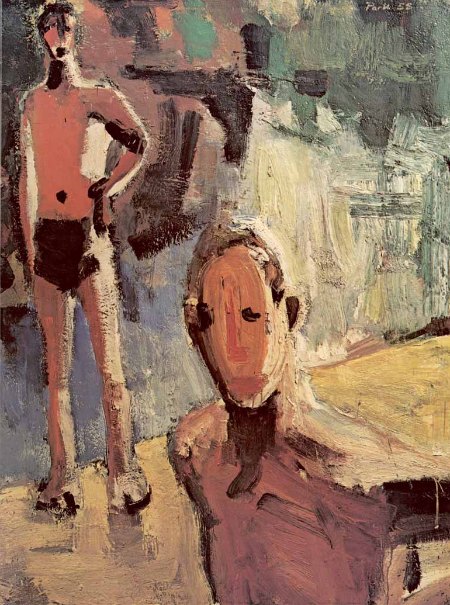 In the 21st Century, his influence is everywhere, or, as Auden wrote about Yeats, "he has become his admirers."
In the 21st Century, his influence is everywhere, or, as Auden wrote about Yeats, "he has become his admirers."Julia Kuhl, for that quality of living in inside a head and stuck at an impasse, for the inadvertent tenderness.
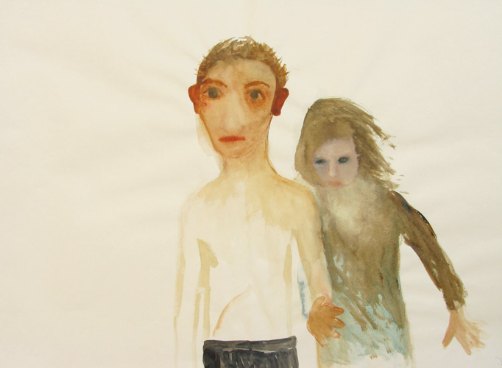 Peter F. Gross, for tactile intensity. (Anonymous Russian poet: "Can I help it if your bones rattle in my heavy, tender paws?")
Peter F. Gross, for tactile intensity. (Anonymous Russian poet: "Can I help it if your bones rattle in my heavy, tender paws?")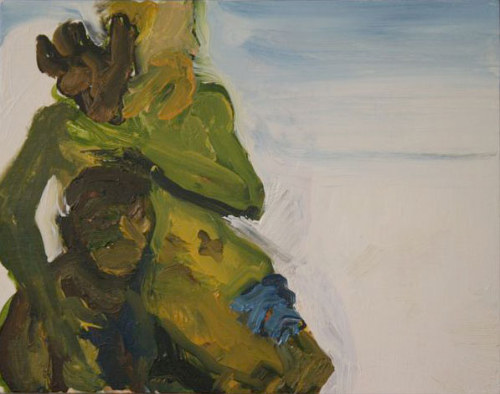 Mark Takamichi Miller - for bodies that own the air around them, without noticing it, and for big color.
Mark Takamichi Miller - for bodies that own the air around them, without noticing it, and for big color. 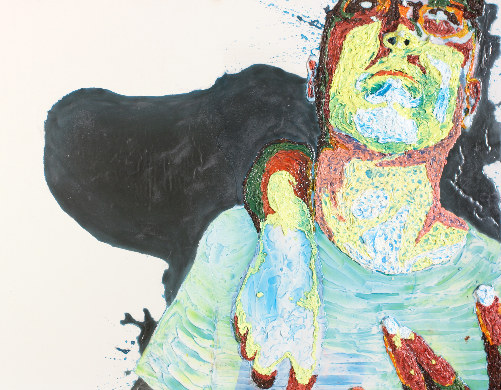 Mette Tommerup - What is the opposite of observant? A David Park figure.
Mette Tommerup - What is the opposite of observant? A David Park figure.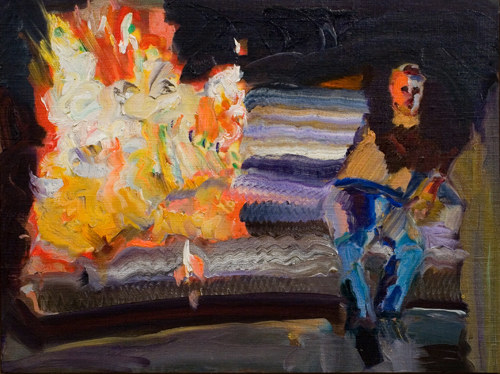 Brian Burke - stones in the river, lumpen proletariat in the sky.
Brian Burke - stones in the river, lumpen proletariat in the sky.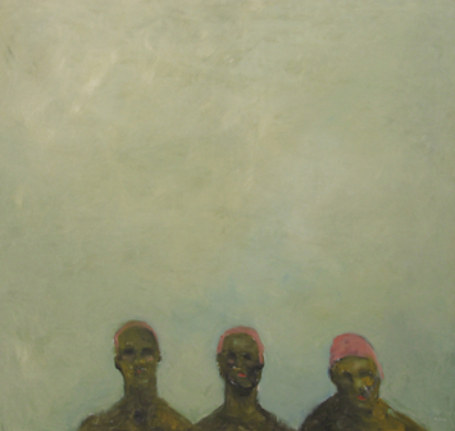
If I had my way we'd sleep every night all wrapped around each other like hibernating rattlesnakes.Connection creates wreckage:
Steven Miller
 A happy hum
A happy humLuke Gilford from This Is A Race
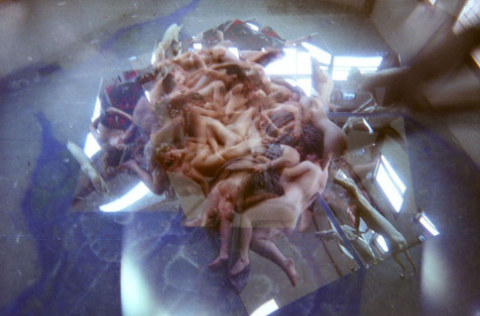 And choreographed symbology, life in death.
And choreographed symbology, life in death.Peter Santino, self-portrait (Image after the jump, being not quite safe for work, depending on the work)
(For more on rattlesnakes, connected and otherwise, you want to read Gordon Grice's Deadly Kingdom: The Book of Dangerous Animals. William Burroughs did. It's probably where he got the image. )
Continue reading The body tangle .
The Fire at Petersons Crossing oil / canvas, 2008 unframed: 38 x 86"
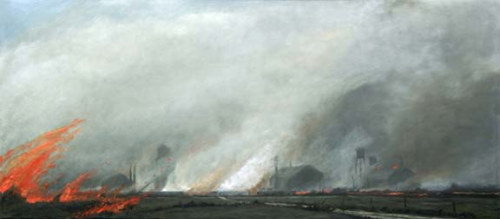 About the artist's own life I know little, but his paintings live in the world as depressed solitaries. The he who is their unseen narrator drives alone on country roads. Usually it's raining. If he stepped outside, his shoes would sink into muck. If there's light ahead, he hasn't reached it.
About the artist's own life I know little, but his paintings live in the world as depressed solitaries. The he who is their unseen narrator drives alone on country roads. Usually it's raining. If he stepped outside, his shoes would sink into muck. If there's light ahead, he hasn't reached it.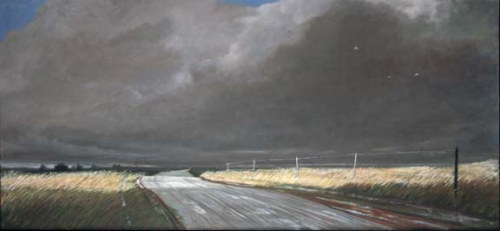 In describing his studio, the narrator allows himself a few flourishes. Like the Dutch before him, he can paint a bowl with the qualities of ceramic next to translucent glass and the dull sheen of polished tin. As a view beyond his leaded-glass windows, he can articulate spindly winter trees in a foggy purple haze.
In describing his studio, the narrator allows himself a few flourishes. Like the Dutch before him, he can paint a bowl with the qualities of ceramic next to translucent glass and the dull sheen of polished tin. As a view beyond his leaded-glass windows, he can articulate spindly winter trees in a foggy purple haze. Studio in Half Light II oil / canvas, 2009 31 x 91"
 The play of light interests the narrator more than what it plays upon. Light is never redemptive, but it's worth the time it takes to notice its qualities. Objects are interchangeable, like roads or tables or nude women reclining on beds.
The play of light interests the narrator more than what it plays upon. Light is never redemptive, but it's worth the time it takes to notice its qualities. Objects are interchangeable, like roads or tables or nude women reclining on beds. Room with Three Jars oil / canvas, 2010 40" x 66
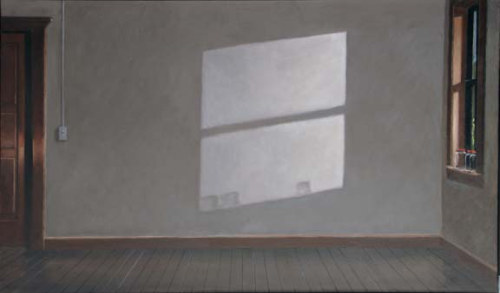 Here's the entirety of Lundin's artist statement:
Here's the entirety of Lundin's artist statement:The less you have, the more important what is there becomes.
He is a painter of reduced expectations and subtle skill. He likes to show off that skill but takes pains that his final product have an element of the casual. The hard work he hides. It's nobody's business but his own.
Starn Twins Macabre Still Life, 1983 (Image via)
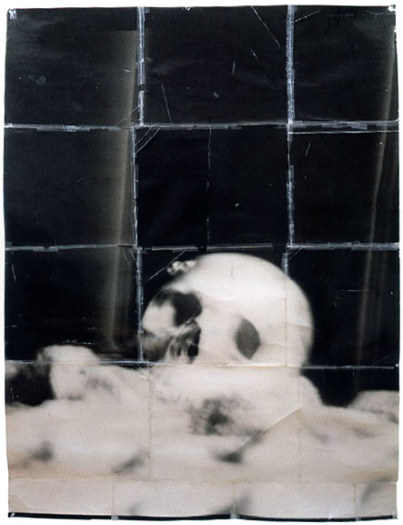 Nearly 30 years later, Sean McFarland's version of the seen-better-days photograph is far more modest, as befits his subject. Formerly known as the Golden State, California appears to have lost its luster.
Nearly 30 years later, Sean McFarland's version of the seen-better-days photograph is far more modest, as befits his subject. Formerly known as the Golden State, California appears to have lost its luster.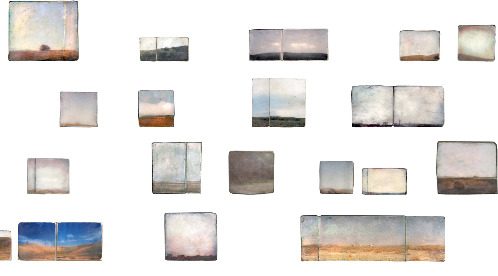
Jack Daws - TWO TOWERS, 2003 Chromogenic print of artist-made construction from McDonald's French fries and Heinz ketchup photographed by Richard Nichol 50 x 40 inches, Edition of 10
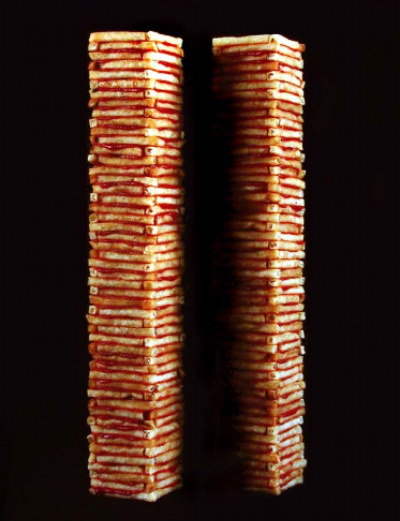 Toots Zynsky (image via)
Toots Zynsky (image via)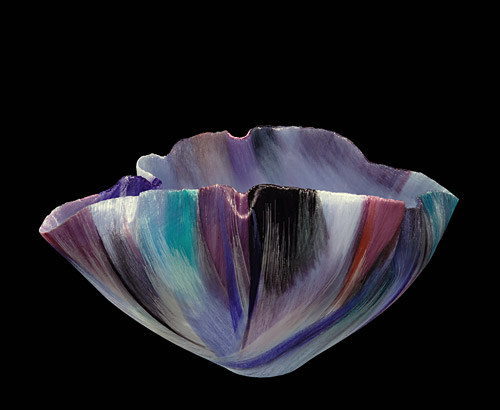 El Anatsui
El Anatsui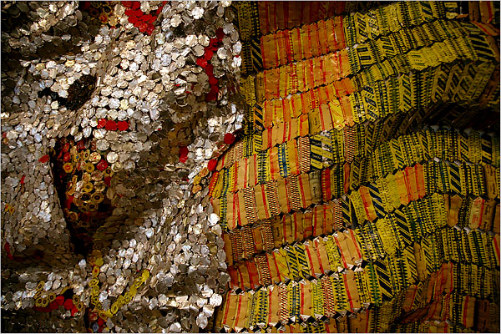 Ross Palmer Beecher - AUTO LOG CABIN QUILT, 2009
Aluminum license plates, tin, Hot Wheel cars and mixed media, 76 x 87 inches
Ross Palmer Beecher - AUTO LOG CABIN QUILT, 2009
Aluminum license plates, tin, Hot Wheel cars and mixed media, 76 x 87 inches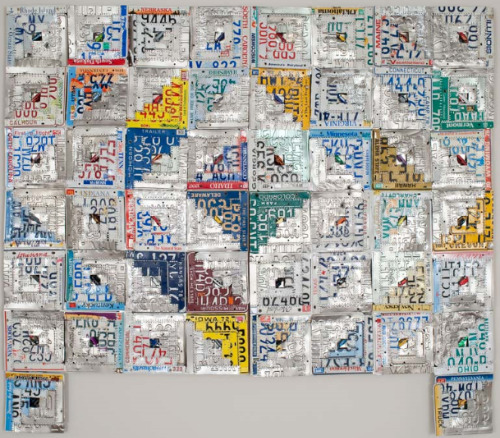 Gail Tremblay
Gail Tremblay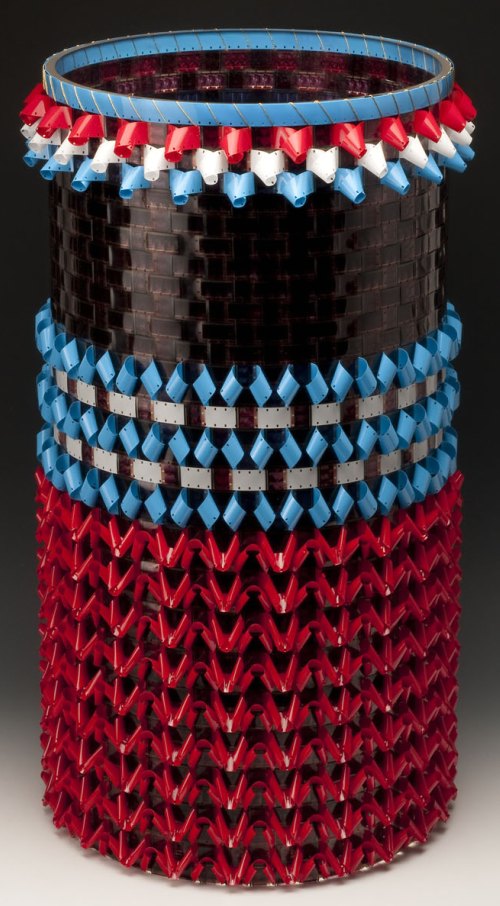 Claude Zervas - d6,
custom electronics and programming, LEDs, high/flex wire, stainless steel wire,
82"h x 22"w x 7"d
Claude Zervas - d6,
custom electronics and programming, LEDs, high/flex wire, stainless steel wire,
82"h x 22"w x 7"d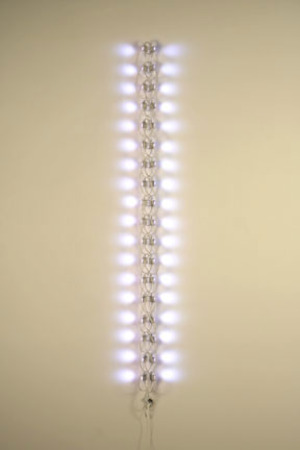 Marita Dingus - Glass Baby With Corks All Around
Marita Dingus - Glass Baby With Corks All Around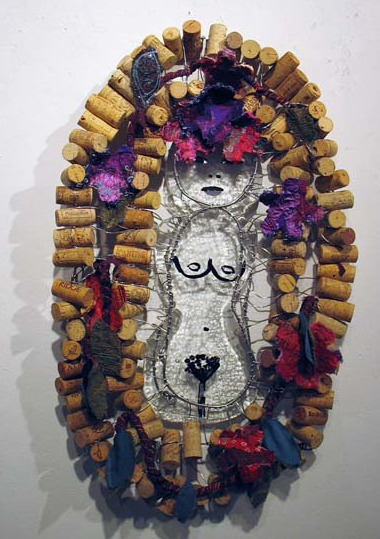 Alex Schweder La - Spit Skin,
Saliva and biodegradable loose fill packing peanuts,
96" x 42" x 120" in December 2006, 18" x 48" x 72"
Alex Schweder La - Spit Skin,
Saliva and biodegradable loose fill packing peanuts,
96" x 42" x 120" in December 2006, 18" x 48" x 72" 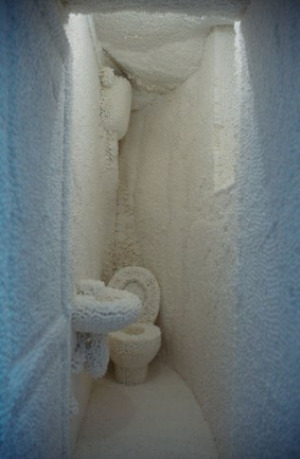 Ryan Pfluger - Bagged Lunch, 2007
Ryan Pfluger - Bagged Lunch, 2007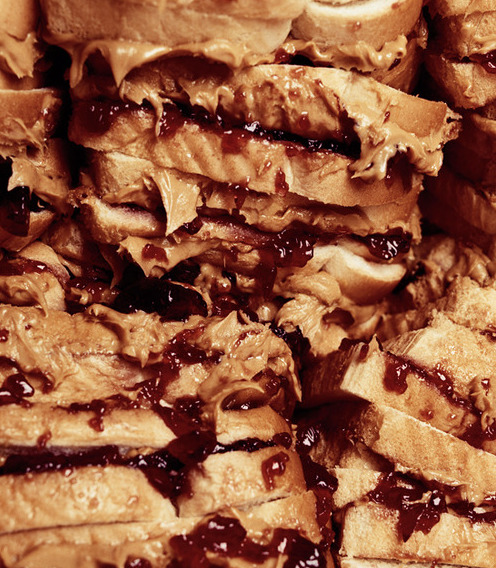 Etsuko Ichikawa
Etsuko IchikawaIt's not the physical resemblance, although it's striking:
(images, Juniper Shuey)
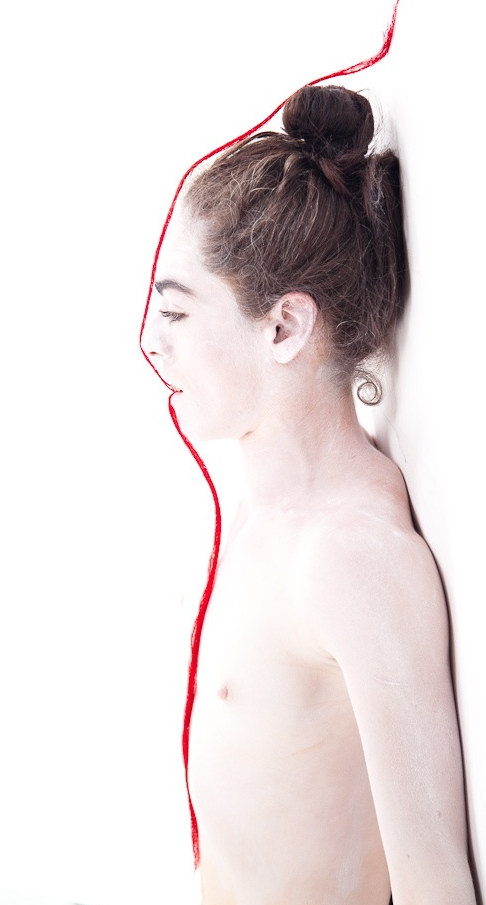 It's the meaning of their movements,Salander in a boxing ring, Scofield on stage. Scofield never would have made it as a ballet dancer, she says in the video below, because she "couldn't stay in line." Any line other than her own. She is light on her feet but owns the floor. Gravity
loves her without being able to contain her. When she jumps, she hangs
in the air, feet extended and slightly curved, fingers flared. When she crouches, she's a menace to society.
It's the meaning of their movements,Salander in a boxing ring, Scofield on stage. Scofield never would have made it as a ballet dancer, she says in the video below, because she "couldn't stay in line." Any line other than her own. She is light on her feet but owns the floor. Gravity
loves her without being able to contain her. When she jumps, she hangs
in the air, feet extended and slightly curved, fingers flared. When she crouches, she's a menace to society. Scofield is married to artist Juniper Shuey, with whom she collaborates in videos, photos and stage settings. (Their website, Zoe/Juniper, here.)
 At the MacDowell Colony for the last two months, he created a series of photos that present the Scofield as a sexless series of white shadows in a wood. There's a hint of Matthew Barney in the ritualized ceremony, but Shuey is indie-rock to Barney's opera, low rent to high palace.
At the MacDowell Colony for the last two months, he created a series of photos that present the Scofield as a sexless series of white shadows in a wood. There's a hint of Matthew Barney in the ritualized ceremony, but Shuey is indie-rock to Barney's opera, low rent to high palace.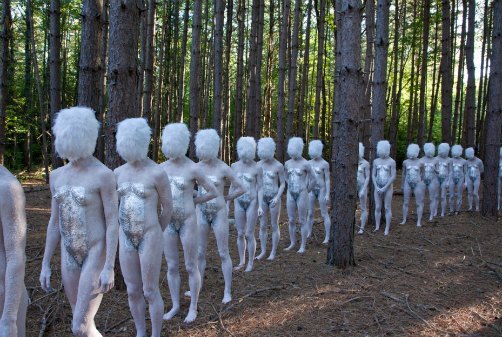 To his interest in what it means to live in a body, Shuey contributes a haunted unease, an inability to connect. The gap between him and other people equals the gap between him and himself. He involves the audience in his perceptual play, shrouding visitors in doubt the way fog rolls over the moors when Sherlock Holmes walks on them.
To his interest in what it means to live in a body, Shuey contributes a haunted unease, an inability to connect. The gap between him and other people equals the gap between him and himself. He involves the audience in his perceptual play, shrouding visitors in doubt the way fog rolls over the moors when Sherlock Holmes walks on them.
Working with Scofield, Shuey's doubt and her determination fuse. Like the engagement of the cooked Mikael Blomkvist with the raw Salander in Stieg Larsson's Millennium Trilogy, they connect to amplify, instead of canceling each other out.
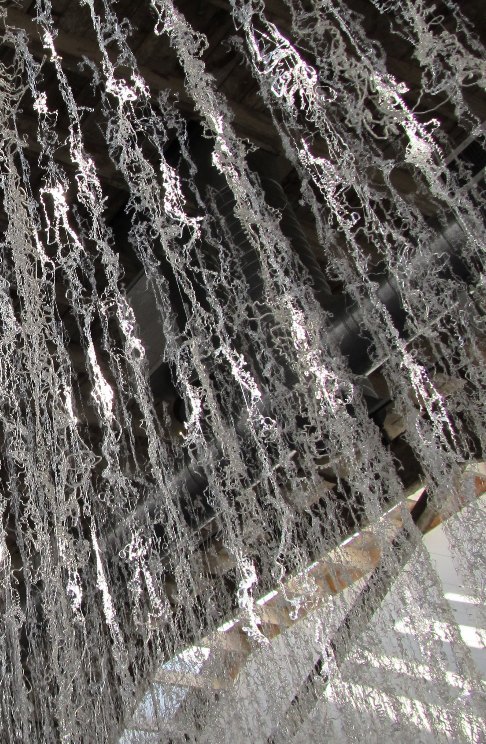 More than 2,000 strands make an overhead cove in the gallery space. Each one is a vertical drawing, a dissolute calligraphy lost in the chorus of its fellows.
More than 2,000 strands make an overhead cove in the gallery space. Each one is a vertical drawing, a dissolute calligraphy lost in the chorus of its fellows. Diaphanous membranes are having their moment. It would be nice to see a range of them in one place, including, for example:
Alyson Shotz
 Lead Pencil 6 Columns, 2006 Government grey nylon 12 x 18 x 1 feet Edition of 3
Lead Pencil 6 Columns, 2006 Government grey nylon 12 x 18 x 1 feet Edition of 3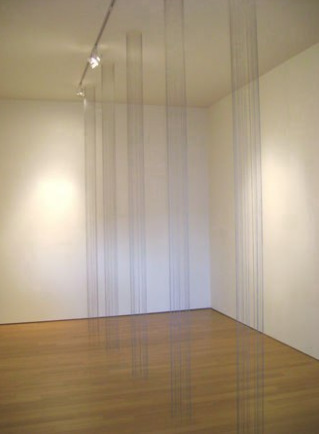 Victoria Haven DOUBLE OR NOTHING (white variant), 2008
Cut steel with white powder coating and fasteners
27 x 25 x 1.75 inches
Variable edition of 6 (2 variants in each of 3 finishes)
Victoria Haven DOUBLE OR NOTHING (white variant), 2008
Cut steel with white powder coating and fasteners
27 x 25 x 1.75 inches
Variable edition of 6 (2 variants in each of 3 finishes)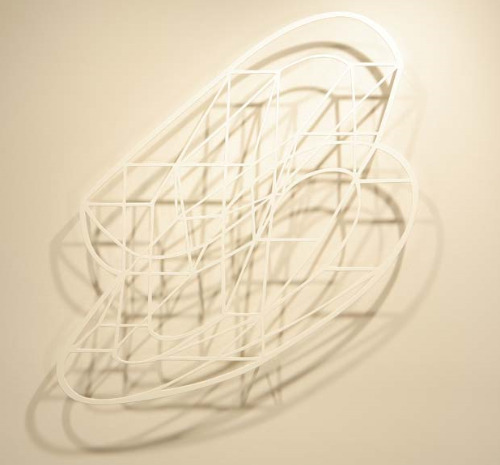 Teresita Fernandez
Teresita Fernandez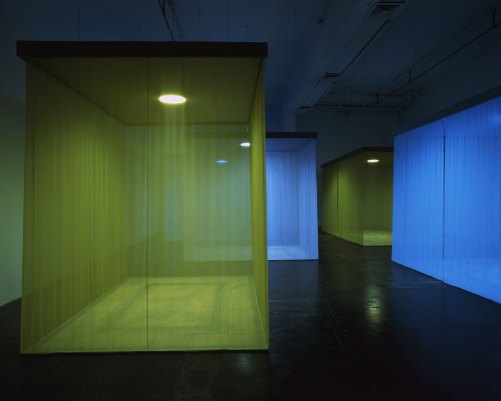 Deborah Ascheim
Deborah Ascheim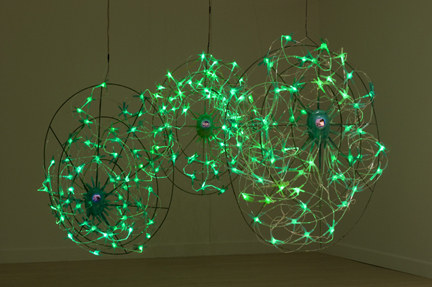 Yuriko Yamaguchi
Yuriko Yamaguchi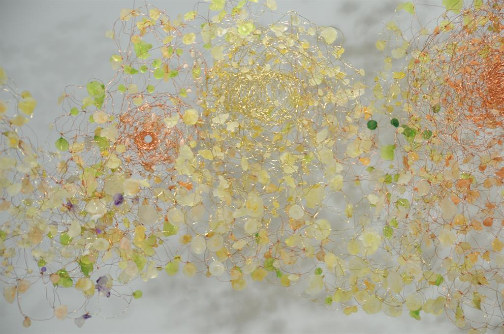 Caroline Lathan-Stiefel
Caroline Lathan-Stiefel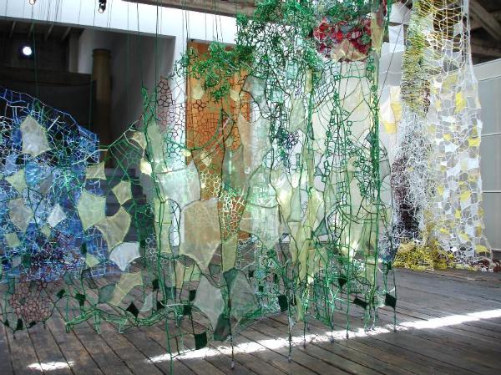 Beth Sellars would be an excellent choice to curate it. Of the 8 artists shown above, she has featured five at Suyama Space.
Beth Sellars would be an excellent choice to curate it. Of the 8 artists shown above, she has featured five at Suyama Space. Gerri Sayler at Suyama through Dec. 17.
Here or there, he connects.
Andrei Codrescu:
His greatness lies, I believe, in the extraordinary swiftness with which he establishes a relationship with his subjects, a relationship that is unfailingly empathetic.
While still based in Seattle but traveling around the country, Miksys concentrated on bingo, where he has roots. He won his first game at 11, collecting the impressive sum of $280, and in high school delivered a newspaper his father published, Bingo Today.
Lipstick, New Orleans, 1997
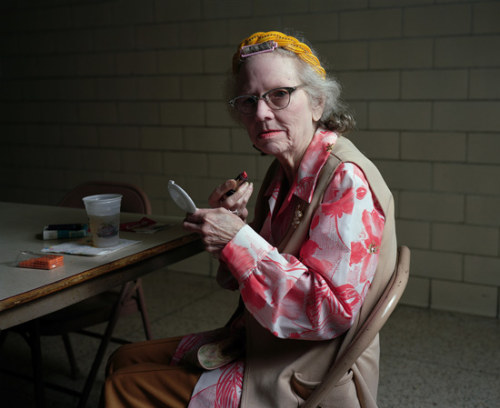 Hickey, Seattle 1997
Hickey, Seattle 1997 In 2007, he published a book of portraits featuring Lithuanian Roma titled, BAXT, which is a Romani word for destiny, fate or fortune.
In 2007, he published a book of portraits featuring Lithuanian Roma titled, BAXT, which is a Romani word for destiny, fate or fortune. 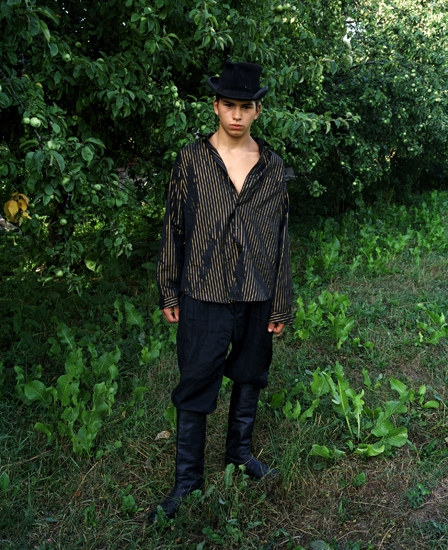 Miksys:
Miksys:This week my BAXT series about the Roma (Gypsies) of Lithuania will be shown at FOTOHOF in Salzburg (Austria) and the Vilnius Contemporary Art Centre (Lithuania). At Fotohof I am excited to be showing with Ugnius Gelguda and Indre Serpytyte in an exhibition entitled TRYS (Trys=Three). In Vilnius I will be taking part in the "Lithuanian Art: 2000-2010: Ten Years" exhibition, a retrospective of Lithuanian art produced in the last decade.
In both exhibitions he's showing original photographs and
documentation of how some were transformed in the hands of his subjects.
Miksys:
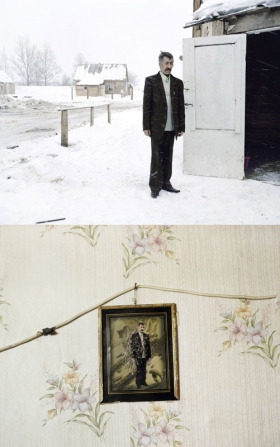
Miksys:
During the time I was taking portraits of people for BAXT, I gave them copies. Then I also gave away books. When I revisited them much later on, I was astonished to see how they had altered my photographs and displayed them in their homes. Some had ripped their image from the book and hung it up in their living room or bedroom.

Herman Melville's Moby Dick, opening sentence:
Whenever I find myself growing grim about the mouth; whenever it is a damp, drizzly November in my soul; whenever I find myself involuntarily pausing before coffin warehouses, and bringing up the rear of every funeral I meet; and especially whenever my hypos get such an upper hand of me, that it requires a strong moral principle to prevent me from deliberately stepping into the street, and methodically knocking people's hats off--then, I account it high time to get to sea as soon as I can.Zoe Strauss:
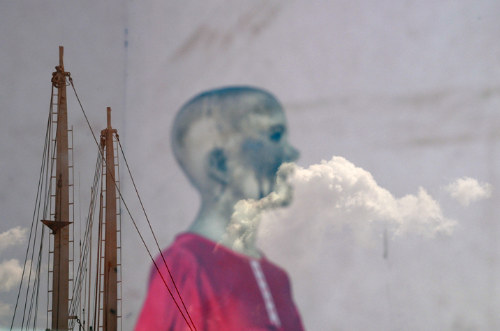
LeDray is one of contemporary art's brightest stars, and this show, organized by the ICA's Randi Hopkins, is the most beautiful, poignant, and witty show the ICA has mounted since moving to its new waterfront home in 2006. LeDray treats clothes as surrogates for human identity, particularly male identity, and for the many types of work that go into constructing it. As such -- and unlike the fashion industry, which is founded on an unblinking faith in the potential of clothes to communicate power, beauty, and self-worth -- his work is intensely alive to the pathos clothes can communicate, and to the many senses in which they just don't . . . quite. . . fit. (more)
LeDray's workworkworkworkwork travels to the Whitney Museum of American Art (the entire third floor, November 18, 2010-February 13, 2011) and the Museum of Fine Arts, Houston (dates TBA). Although LeDray comes from Seattle and was a guard at the Seattle Art Museum, his exhibit is not scheduled for a Northwest stop.
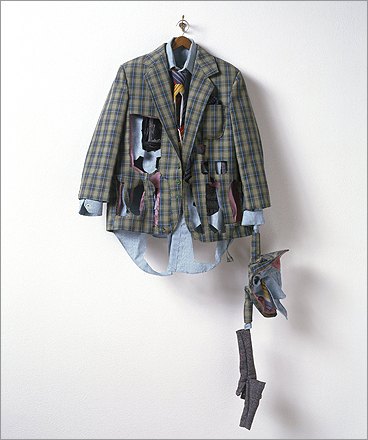
Oct. 21, 6-7 p.m., there's a reception for the three artists at SAM, followed by artists' talks, 7-8. Free admission.
This image, filed under "writing," is on her website. May or may not be her work. I like it either way, as the illusion to which the image refers is in all senses threadbare.
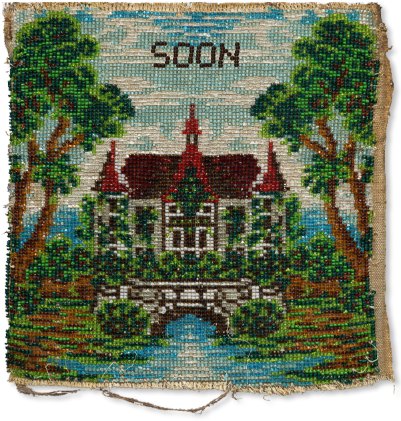
John Bankston comes from another tradition. He drew his way into the world and hasn't, as an adult, shaken off the magic of turning a blank into an image or a lump of clay into a man.
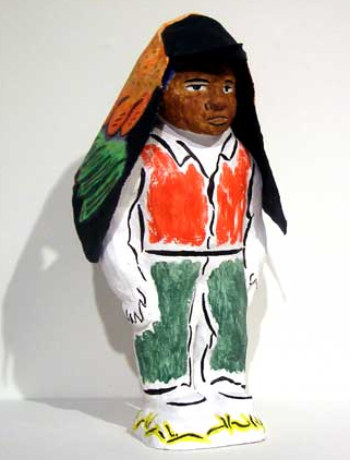 Following Glenn Ligon .... (Image via)
Following Glenn Ligon .... (Image via)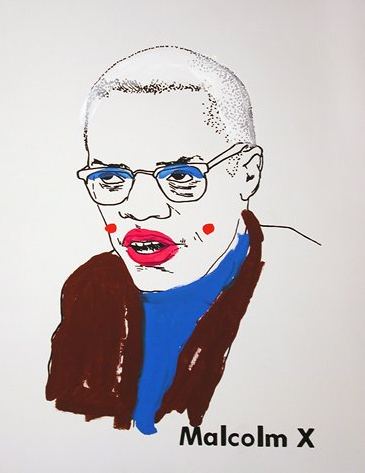 ...Bankston investigates the push-pull of African-American traditions through the prism of a coloring book, minus, of course, the book. The weight of cultural assumption trails his figures like a suspicious clerk in a grocery store.
...Bankston investigates the push-pull of African-American traditions through the prism of a coloring book, minus, of course, the book. The weight of cultural assumption trails his figures like a suspicious clerk in a grocery store. 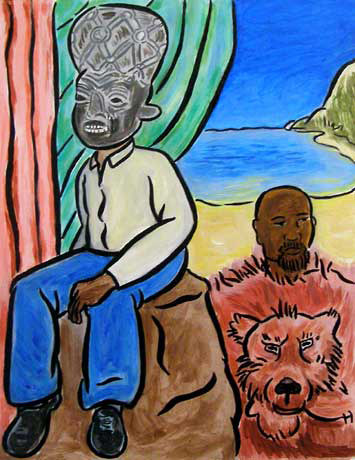
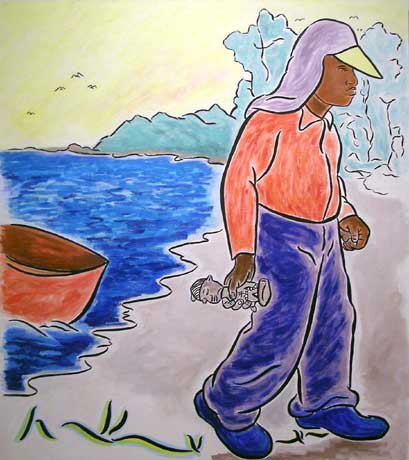 In his jaunty fun-house mirror, tragedy causes the distortions.
In his jaunty fun-house mirror, tragedy causes the distortions.At James Harris through Oct. 9.
This sentence stood out:
The (Seattle City Council) committee obviously was supportive of the opera and Seattle Center, but councilmember Sally Bagshaw said she wanted to ensure the deal would provide specific public benefits, such as vocational opportunities.What an anti-art toad Bagshaw is. Art is not, for her, its own excuse. It has to provide socially redeeming value to earn support. Vocational opportunities? Why not reading groups for gang members and stage sets that reduce global warming?
Journalism tells stories. Even on deadline, even if, in Jonathan Lethem's phrase, it has to tell its story walking, it can't afford to skip a crucial part of the plot.
Seattle's Charles Krafft had a show in a funeral home in 2003, and not, as in Houston, by hanging portraits on the wall. Krafft's art in a dead house was made from the dead:
He's making urns from human ashes, following a formula Josiah Spode invented in 1797, producing fine English china glaze by adding calcinated cow bone to the company's clay mixture. (more)As Larry Reid likes to say, "Ashes to ashes, dust to Delft." Then there's Seattle's Greg Lundgren, who has turned art & death into a business. Excellent Brendan Kiley story on Lundgren here.
On the other hand, when it comes to turning out the living for a show in a funeral parlor, Houston has Seattle beat. I don't remember seeing any major collectors or curators at the opening of Krafft's show at Mount Pleasant Cemetery.
Jennifer Allora and Guillermo Calzadilla (image via)
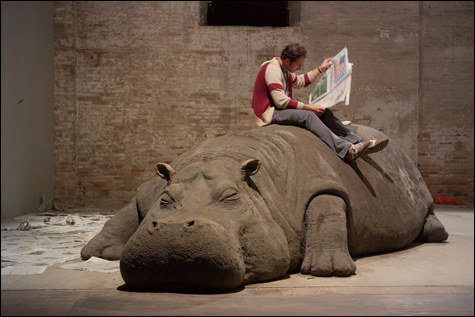
 From the Seattle Weekly:
From the Seattle Weekly:On the insistence of top security specialists at the FBI, she is, as they put it, "going ghost": moving, changing her name, and essentially wiping away her identity. She will no longer be publishing cartoons in our paper or in City Arts magazine, where she has been a regular contributor. She is, in effect, being put into a witness-protection program--except, as she notes, without the government picking up the tab. It's all because of the appalling fatwa issued against her this summer, following her infamous "Everybody Draw Mohammed Day" cartoon. (more)A couple of points:
One of Salman Rushdie's prime targets in Satanic Verses, indeed, the prime target, was the government in England during the Thatcher years. When Iran issued its famous fatawa on him because of its misunderstanding of a dream sequence in the book, the much-maligned-by-Rushdie English government stepped up with round-the-clock protection. Apparently, Molly Norris, who never maligned anyone, is not entitled to her government's support. As an American, she's on her own.
She never drew Mohammad. She drew a cup of coffee, a domino, a box of pasta, a spool of thread, a purse and a cherry, all claiming to be the prophet. (Image here.) Nor did she create the website inspired by her gentle cartoon, "Everybody Draw Mohammed Day,"drawn by her to support Trey Parker and Matt Stone after the South Park brush with fanatics.
The Weekly, her former occasional employer, called her cartoon "infamous." A standard definition of the word is "having a bad name as being the place where an odious crime was committed, or as being associated with something detestable; hence, unlucky; perilous; dangerous."
I'll go with dangerous. Clearly her cartoon has become dangerous to her.
Britain made it a precondition of restoring diplomatic relations with Iran that it discontinue its efforts to kill Rushdie. On Sept. 24, 1998, Iran's Mohammad Khatami said his government would "neither support nor hinder assassination operations on Rushdie."
Norris has said she doesn't want anyone to do anything, but I can think of one thing. Let your representatives know you want the FBI to fund Norris in hiding. And while I realize that moderate Muslims have their hands full these days, it would be wonderful if a few of them could try to explain this misunderstanding to those who are so easily and dangerously offended, so that Norris can come home and be herself again.
Chiharu Shiota - Circle the suitcases!
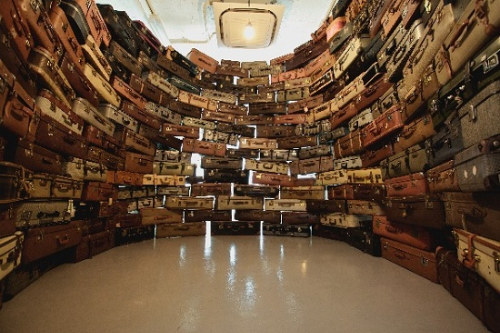 Demetrius Oliver's Asterism - black stars on the move.
Demetrius Oliver's Asterism - black stars on the move.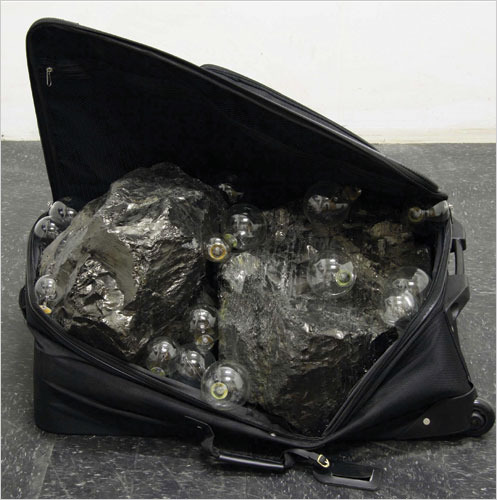 Huma Mulji - Arabian Delight
Huma Mulji - Arabian Delight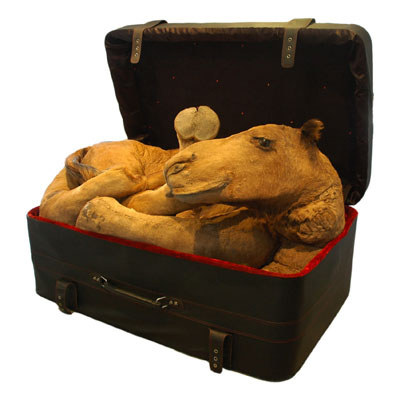 Robert Capa's long-lost Mexican suitcase
Robert Capa's long-lost Mexican suitcase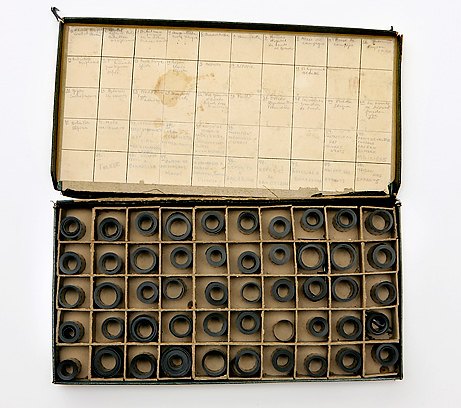 The Art Guys - Suitcase Wheel
The Art Guys - Suitcase Wheel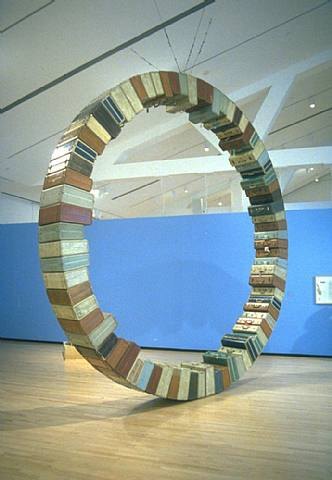 Preston Singletary - Bentwood Box
Preston Singletary - Bentwood Box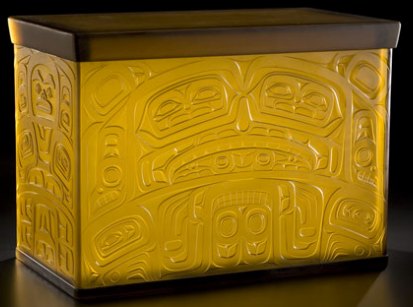
Grade, pronounced Grotty, Circuit 2010 - Glazed ceramic bonded with gypsum polymer to corn-based resin embedded with marine netting. 9 x 24 x 24 feet
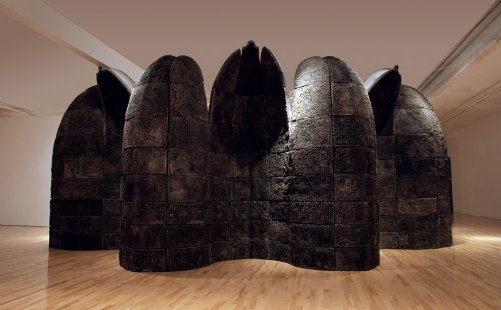 After its exhibition at Davidson Galleries, Circuit will spend a year on a mountain, accumulating changes as a fast-forward into old age.
After its exhibition at Davidson Galleries, Circuit will spend a year on a mountain, accumulating changes as a fast-forward into old age.Jerry Pethick mined the vein of weathering change before Grade. Time Top was Pethick's last major work before his death in 2003. Granted, Grade's work is more of a performance than Pethick's.
Grade:
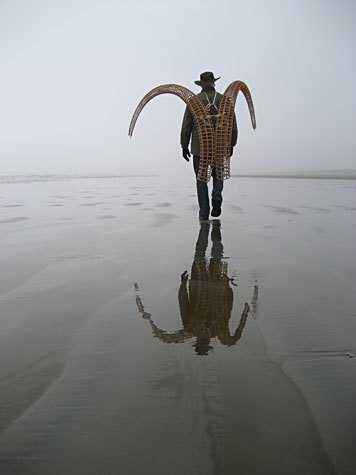 But Pethick had a better idea of what works in a gallery. He tended to keep the inside and outside separate. Not for him would be Grade's forlorn and drab grouping of dark husks in a gallery. Disintegrating in nature (entirely biodegradable, by the way) Circuit is bound to produce a more interesting series of photos, at the least.
But Pethick had a better idea of what works in a gallery. He tended to keep the inside and outside separate. Not for him would be Grade's forlorn and drab grouping of dark husks in a gallery. Disintegrating in nature (entirely biodegradable, by the way) Circuit is bound to produce a more interesting series of photos, at the least. At Davidson till Oct. 2.
Wikipedia
The Diana is a very simply constructed box camera with a mechanical film advance, spring-loaded shutter, and a plastic viewfinder of questionable utility. It is constructed primarily of low-quality phenolic plastics of the type commonly found in toys imported from Asia during the 1960s. Because of wide variances in production quality, combined with a poorly-designed camera body latching mechanism, Diana cameras are predisposed to light leaks onto the exposed film.In the 1970s, riding on a river of chance, Nancy Rexroth began to make the most of the camera's unpredictable disadvantages. (1975, 8 x10 inches, vintage silver print)
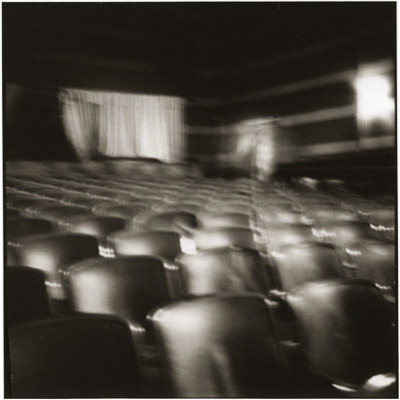 Rexroth:
Rexroth:Diana images are often something you might see faintly in the background of a photograph... sometimes, I feel I could step over the edge of a frame and walk backwards into this unknown region. Then I would keep right on walking...Her figures are standing there, but they're already gone.
Amy Blakemore began using the Diana in graduate school in the 1980s at the University of Texas. Unlike Rexroth, who stuck to black and white, Blakemore quickly switched to color. And while Rexroth's prints are otherworldly, related to late 19th Century Pictorialism, Blakemore's have an internal precision inside the blur.
For her, clicking the shutter produces a rough draft. What's important about her prints she achieves in the darkroom. There is nothing accidental about her compositions or her tonal orchestration. And while Rexroth's landscapes and figures fragile, shot full of light, Blakemore's are oddly sturdy. She makes them by hand, and her constructions favor the solid. One more thing: While Rexroth's is a silent world, Blakemore's tends toward the convivial. Her figures frequently face the camera and look as if they are about to greet the viewer.
Steph, 1995
 A 20-year survey of her work is at the Seattle Art Museum courtesy of the Museum of Fine Arts, Houston, curated by Alison de Lima Greene. At James Harris Gallery is a selection of recent work.
A 20-year survey of her work is at the Seattle Art Museum courtesy of the Museum of Fine Arts, Houston, curated by Alison de Lima Greene. At James Harris Gallery is a selection of recent work. Green's show is gorgeous, but its installation at SAM is a problem. The problem isn't necessarily the corridor where it hangs. That particular corridor worked well for Everything Under The Sun: Photographs of Imogen Cunningham and the lovely little Tack & Jibe, art about sailing. But Blakemore's photos look as if they're still in storage. Why
Blakemore deserves more and gets it at James Harris - small gallery in the back but well-lit, well-hung and not crowded.
I love her historical resonance. Take, for instance, W. Eugene Smith's A Walk To Paradise Garden, 1946.
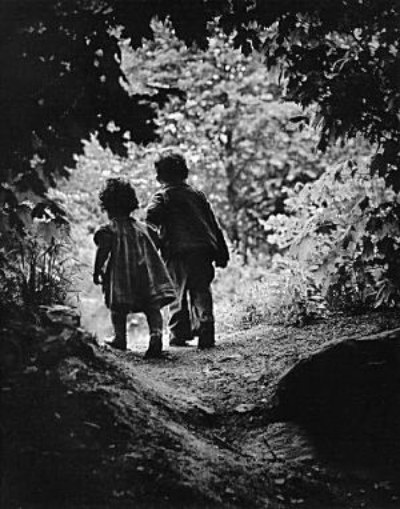 Blakemore strips the image of its sentimentality, its holy hush. She lights the before of the passage as well as the after and lays a whip strap of a shadow across the boy's back.
Blakemore strips the image of its sentimentality, its holy hush. She lights the before of the passage as well as the after and lays a whip strap of a shadow across the boy's back. Boy in Woods, 2010 Chromogenic Print Ed. of 10 19" x 19"
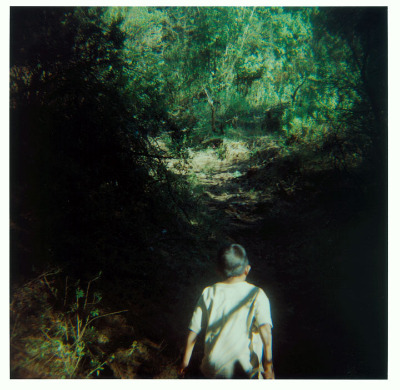 A shadow expands to cover most of her mother's stoic face but everything is visible inside it. The composition centers on a tension-release narrative, as the hands of the man holding the wheelchair are white along their edges. (Although he's the one driving her into the dark, she's ready and he's not.)
A shadow expands to cover most of her mother's stoic face but everything is visible inside it. The composition centers on a tension-release narrative, as the hands of the man holding the wheelchair are white along their edges. (Although he's the one driving her into the dark, she's ready and he's not.)Mom, 2009 Chromogenic Print Ed. of 10 19" x 19"
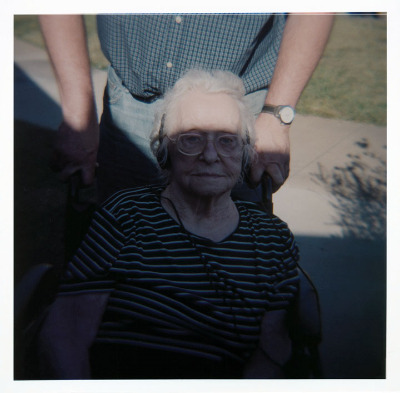 In spirit, her work is closest to Neil Goldberg's.
In spirit, her work is closest to Neil Goldberg's.Goldberg, My Father Breathing into a Mirror Single channel video 2005 1:00 min Silent
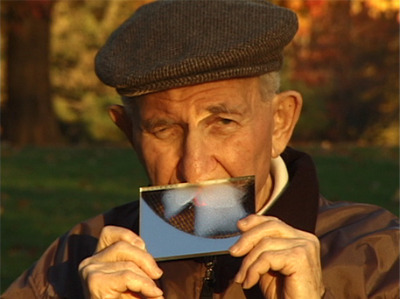 Both Blakemore and Goldberg relate to the final lines of John Cheever's Falconer:
Both Blakemore and Goldberg relate to the final lines of John Cheever's Falconer:Farragut walked to the front of the bus and got off at the next stop. Stepping onto the street he saw he had lost his fear of falling (he had forgotten how to walk as a free man). He held his head high, his back straight and walked along nicely. Rejoice, he thought. Rejoice.
Blakemore through Feb. 13 at SAM; through Oct. 9 at James Harris.
Knight:
Sterbak's Vanitas: Flesh Dress for an Albino Anorexic is now in the collection of the Centre Georges Pompidou, Paris' modern art museum -- an appropriate locale, given that city's intersection of art and fashion. Most recently it has been on view in the exhibition "elles@centrepompidou," a changing year-long survey dedicated to women artists.What's striking about Gaga's look is the shoes. (Image via John Perreault on facebook.)
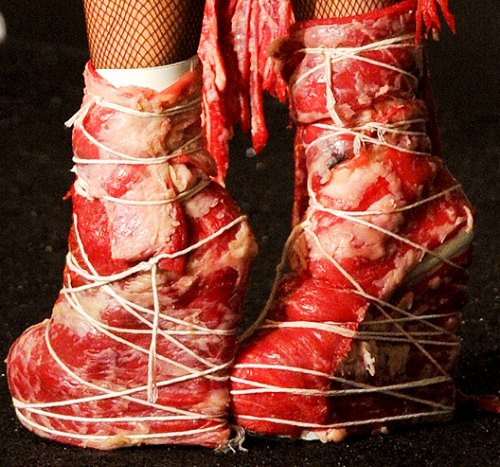 People for the Ethical Treatment of Animals (PETA) is unhappy, and best health practice is an issue too. (Art doesn't have to be nice or good for you.)
People for the Ethical Treatment of Animals (PETA) is unhappy, and best health practice is an issue too. (Art doesn't have to be nice or good for you.)Aside from spectacular discomfort, dressing in crockery has no downside.
Maggot infestation can happen quickly on raw meat at room temperature and will develop faster with heat, accelerated by being close to skin and under hot lights," says Dr. Shawki Ibrahim, chief scientific advisor for Grow Green Industries. Plus, "the dress is definitely puts her at an E.coli risk if she had a cut on her skin, but otherwise it's just the stink factor." (more)
Li Xiaofeng
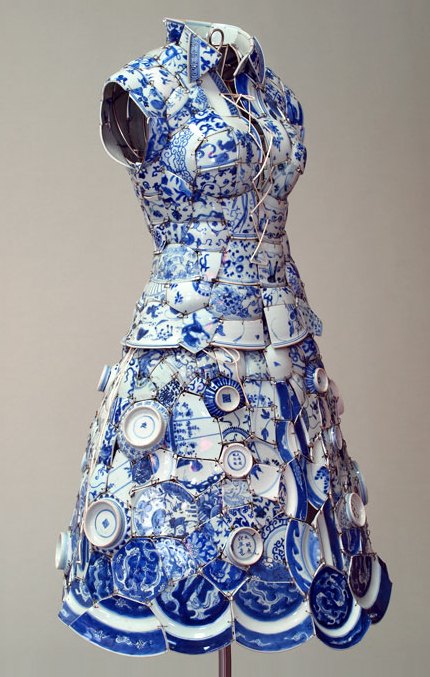 I also like the hat, via Evan Blackwell, artist unknown, from the Minsheng Art Museum in Shanghai.
I also like the hat, via Evan Blackwell, artist unknown, from the Minsheng Art Museum in Shanghai. 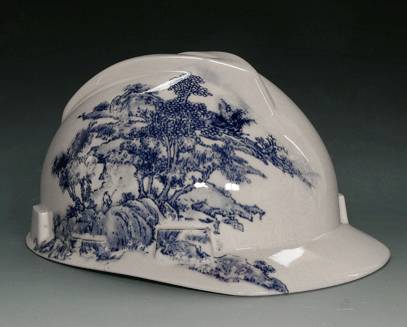
The occasion for the error was an occasional column known as The Way We Live Now. The Times printed a photo that included Lawrence Ferlinghetti and asked for his commentary.
I am the only one in the picture still alive, because I work out all the time. They didn't work out except raising the elbow or rolling joints. (more)I remembered this story because the Times has once again printed the photograph.
From left, Bob Donlon, Cassady, Allen Ginsberg, Robert LaVigne and Lawrence Ferlinghetti in San Francisco
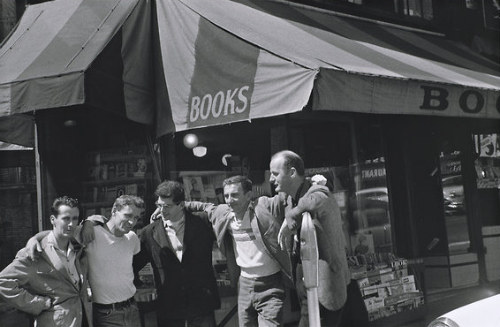 When was it taken? In 2002, The Times said 1955. Now, it says 1956. Also, although Bob thinks his last name is LaVigne, The Times currently insists it's La Vigne. What does he know?
When was it taken? In 2002, The Times said 1955. Now, it says 1956. Also, although Bob thinks his last name is LaVigne, The Times currently insists it's La Vigne. What does he know? Not to quibble, which would be karmically unwise. If I have a bit of an attitude about The Times' coverage of this event, however, it's because Bob called me in 2002 to ask what he should do about his demise. I offered to alert the newspaper to its error, and he gratefully accepted.
Much to my surprise, The Times did not want to be alerted. After a long run-around, I finally got the editor of the section, who told me that LaVigne would have to prove he was alive to get a correction. I was going to ask how he would go about doing so, but she had already hung up. I admitted defeat, and Bob asked a more important friend, I think Daniel Sullivan, who got the job done.
This is not the only time I have hit a wall at The Times. I wrote to ask for a correction to the story on the link, and so did the Seattle Art Museum. Five months later, no correction. Maybe SAM should ask for Daniel Sullivan's help.
 Standing in the parking lot, we're sitting on the edge of our imaginary seats. As befits everyone's busy schedule, we enjoy the beginning and end without having to suffer through the middle. The curtain offers what Paul Valéry wanted to convey in his writing, "the sensation of a story without the boredom of its conveyance."
Standing in the parking lot, we're sitting on the edge of our imaginary seats. As befits everyone's busy schedule, we enjoy the beginning and end without having to suffer through the middle. The curtain offers what Paul Valéry wanted to convey in his writing, "the sensation of a story without the boredom of its conveyance." Martin Creed's Open/Closed, Big/Small, Full/Empty, On/Off is a recap of Creed's magically mundane moments, for once given all the space they need. In the central gallery, there might be nothing at all. In that case, it means the art has wandered off to look for a treat, a walk, a meal, a pat on the head or a nap under the stairs.
Big/Small (Work No. 748)
 In the video gallery, a lamp goes on and off. There's also a balloon gallery, this time silver.
In the video gallery, a lamp goes on and off. There's also a balloon gallery, this time silver.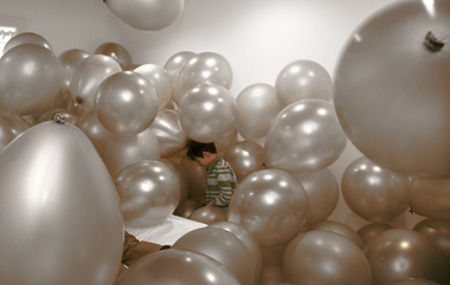 About that light going on and off (Work No. 227) -
Maurizio Cattelan sensed a dark purpose:
About that light going on and off (Work No. 227) -
Maurizio Cattelan sensed a dark purpose: We all have our bad days, when you just can't get it right, like moments of loss and surrender. And we all have our good days, when everything seems to run smoothly, just perfect for no apparent reason. I can see clearly now the rain has gone. You wake up, things are okay, and the sun is shining. And then out of the blue, there you go again, down into the dark pit of depression. It's not just a matter of mood swings. Its something more basic and perverse: the inability to preserve joy. The need to measure it against a black background. Art is no different. It's a ride on the roller coaster of emotions. Sometimes I feel so happy, sometimes I feel so sad. I always thought Martin Creed's Work No. 227: The lights going on and off had something to do with this simple truth. It has the ability to compress happiness and anxiety within one single gesture. Lights go on, lights go off - sunshine and rain, and then back to beginning to repeat endlessly. I do not know what Creed was thinking about when he made it but to me it always looked like a swing, a mood swing. That's why I never found it funny but frightening in its simplicity, it's a sculpture for our lithium oriented, Prozac enhanced reality. Are we afraid of the dark or just blinded by the light? I see a rainbow and I want to paint it black.For me, Creed's work has always been about breathing, about in and out, compression and release; about space charged with a sense of moment, a space where dark and light do not contrast as positives and negatives but embrace as wide-open potentials.
Through Dec. 18.
Robert Creeley - Midnight
When the rain stops
and the cat drops
out of the tree
to walk
away, when the rain stops,
when the others come home, when
the phone stops,
the drip of water, the
potential of a caller
any Sunday afternoon.
By intrusion:
Erwin Wurm
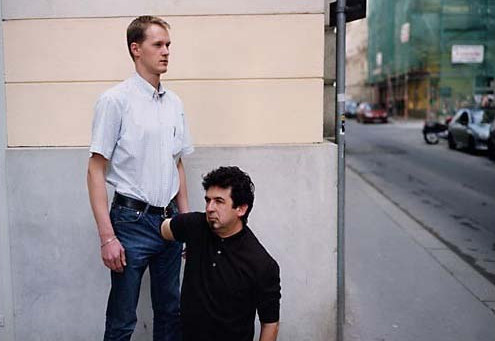 By solitude:
By solitude:Tim Roda
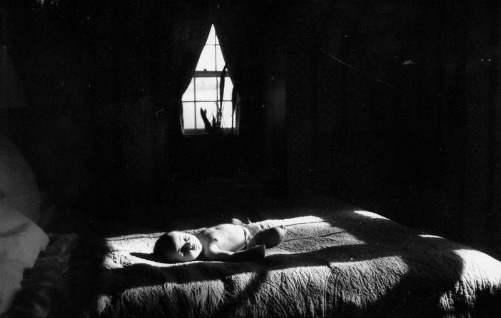 By force:
By force:Regina José Galindo
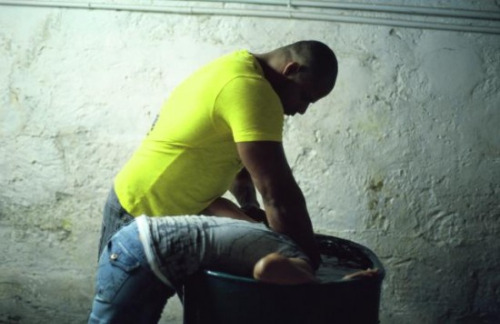 By restriction:
By restriction:Jack Daws
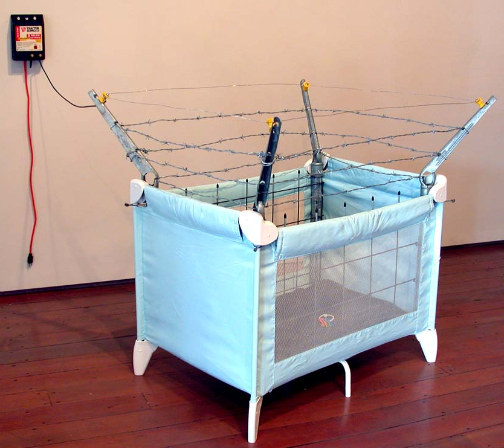 By projection:
By projection:Roger Shimomura
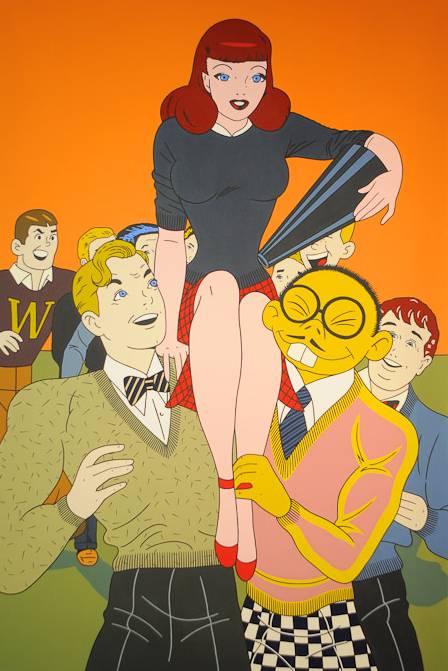 By an excess of self-regard: (USA! USA!)
By an excess of self-regard: (USA! USA!)Grant Barnhart
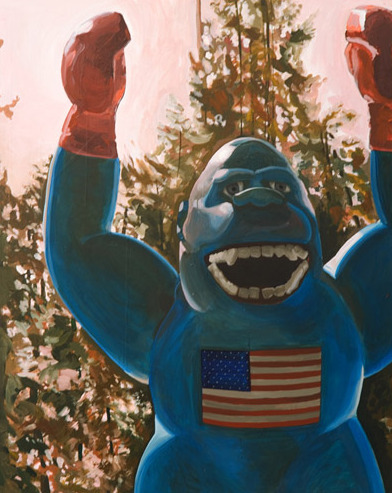 By bad choices:
By bad choices: Susan Robb
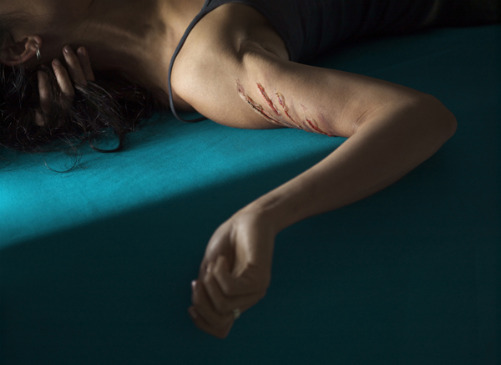 By malign intent:
By malign intent:Scott Fife
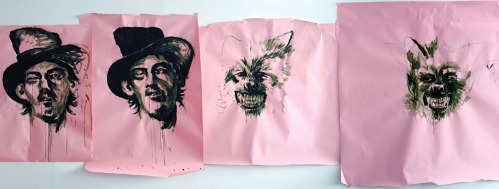
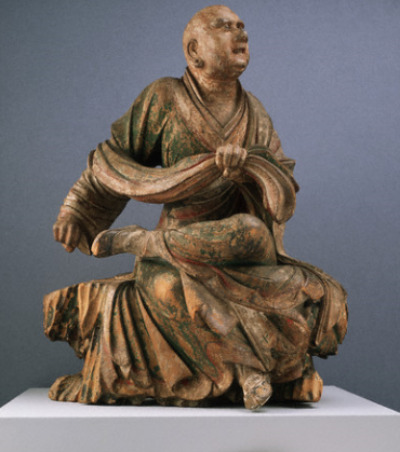 Opening Oct. 2 at Kobo at Higo, Tommer Peterson's Ordinary Household Gods, including, below, Rogue Monk, 2010.
Opening Oct. 2 at Kobo at Higo, Tommer Peterson's Ordinary Household Gods, including, below, Rogue Monk, 2010.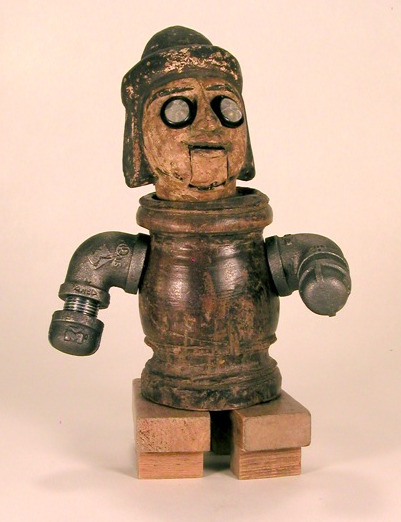
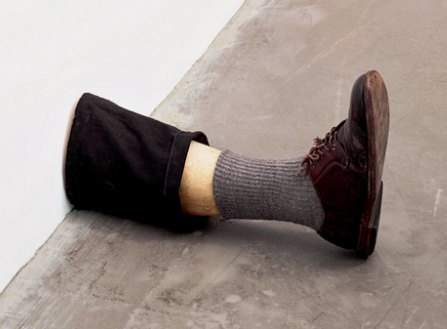 Kathleen Faulkner - shoes made of river stones, transforming your feet into a river
Kathleen Faulkner - shoes made of river stones, transforming your feet into a river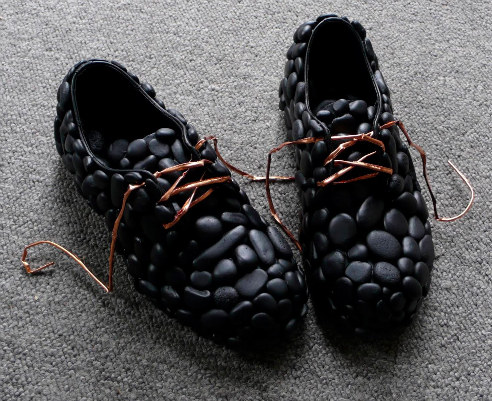 Matthew Barney - excess to bolster an excess
Matthew Barney - excess to bolster an excess 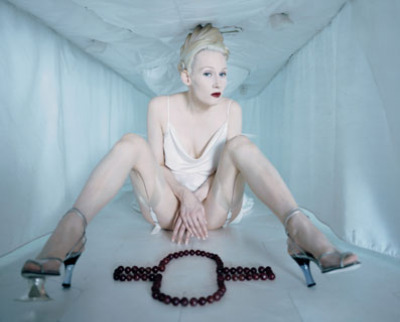 Iris Schieferstein - the jealousy of the flightless biped, grounding others
Iris Schieferstein - the jealousy of the flightless biped, grounding others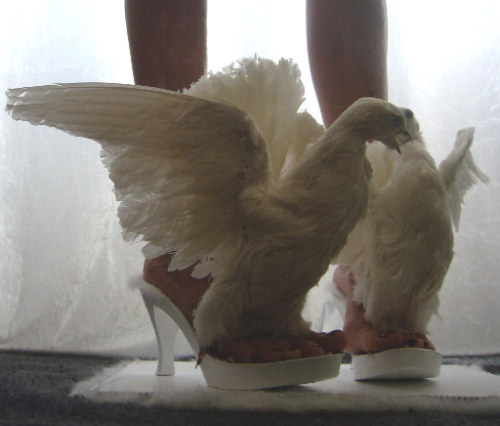 Marilyn Minter - glamour and nausea
Marilyn Minter - glamour and nausea 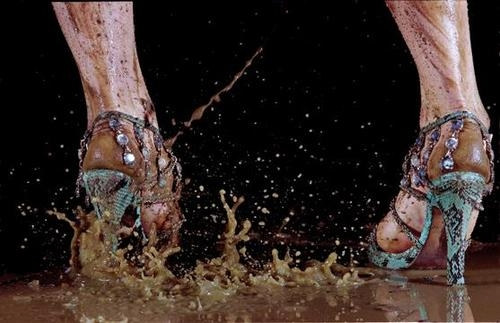 Do-Ho
Suh - power corrupts
Do-Ho
Suh - power corrupts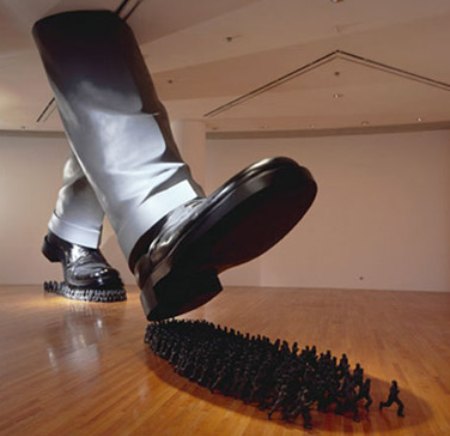 Jennifer Campbell - She did it to herself.
Jennifer Campbell - She did it to herself.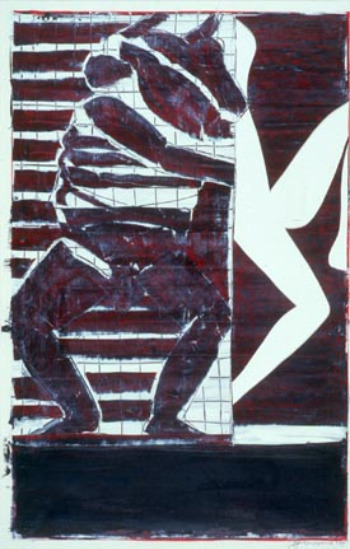 Wrong Distance made the same point quite nicely: a random photo of a room instantly evokes German painter Matthias Weischer."It's far busier than something he would ever do, the colors are not quite, it has a person in it, it's a photo. and yet..."
Wrong Distance made the same point quite nicely: a random photo of a room instantly evokes German painter Matthias Weischer."It's far busier than something he would ever do, the colors are not quite, it has a person in it, it's a photo. and yet..."
The six are:
Leo Saul Berk (His website here, my most recent review here)
Detail from Spider Hole, 2009
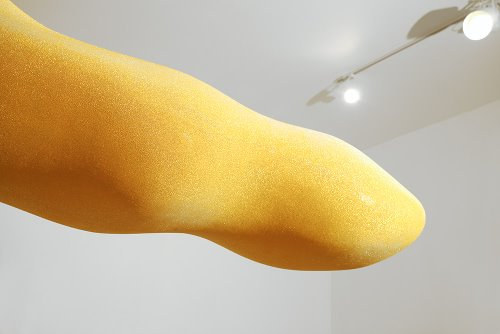 Margie Livingston (Her website here, my latest review here)
Margie Livingston (Her website here, my latest review here)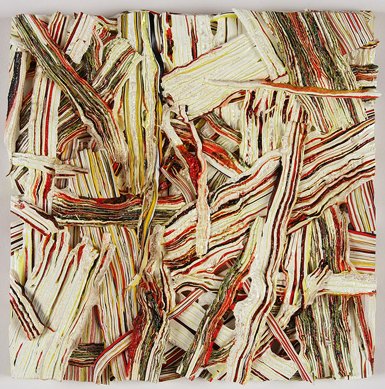 Lead Pencil Studio (Annie Han and Daniel Mihalyo) (Their website, Jen Graves' review)
Lead Pencil Studio (Annie Han and Daniel Mihalyo) (Their website, Jen Graves' review)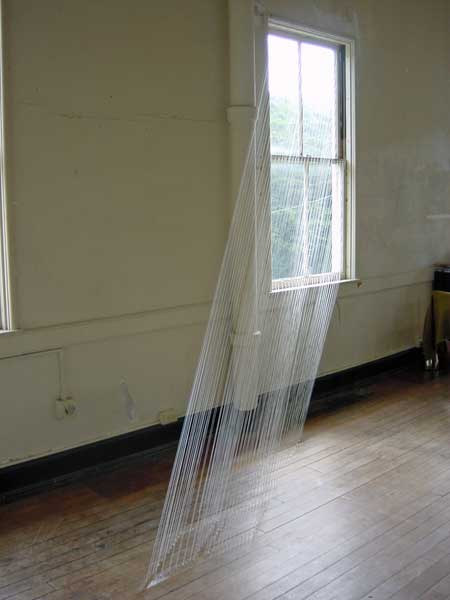 Maggie Orth Barcode Man, 2009
Maggie Orth Barcode Man, 2009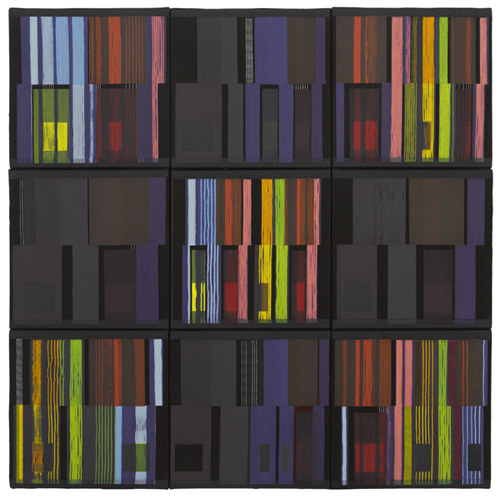 Hugo Solis, Metaphors for Dead Pianos (video image/sound on the link)
Hugo Solis, Metaphors for Dead Pianos (video image/sound on the link)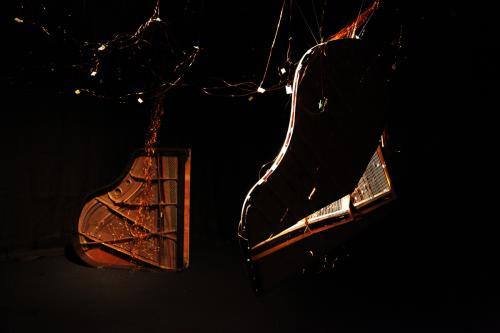 Akio Takamori (more, and my latest review here)
Akio Takamori (more, and my latest review here)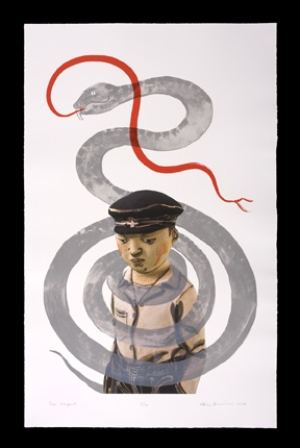 Winners announced Oct. 7.
Winners announced Oct. 7. 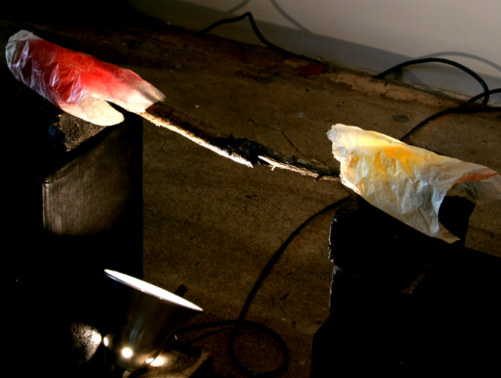 He makes mud shine. Despite the title of his installation at 4Culture Gallery, The Grand Rooms, those looking for finish won't find it. If he'd called it, Laboratory in a Corridor, we'd have truth in advertising, but he isn't interested in advertising, truthful or otherwise. 4Culture Gallery is a long corridor that hooks left and continues. And Waterman's material experiments contain in their shoddy manifestations a suggestion of grandeur around the corner of his next effort. (We can't go on. We'll go on.)
He makes mud shine. Despite the title of his installation at 4Culture Gallery, The Grand Rooms, those looking for finish won't find it. If he'd called it, Laboratory in a Corridor, we'd have truth in advertising, but he isn't interested in advertising, truthful or otherwise. 4Culture Gallery is a long corridor that hooks left and continues. And Waterman's material experiments contain in their shoddy manifestations a suggestion of grandeur around the corner of his next effort. (We can't go on. We'll go on.) 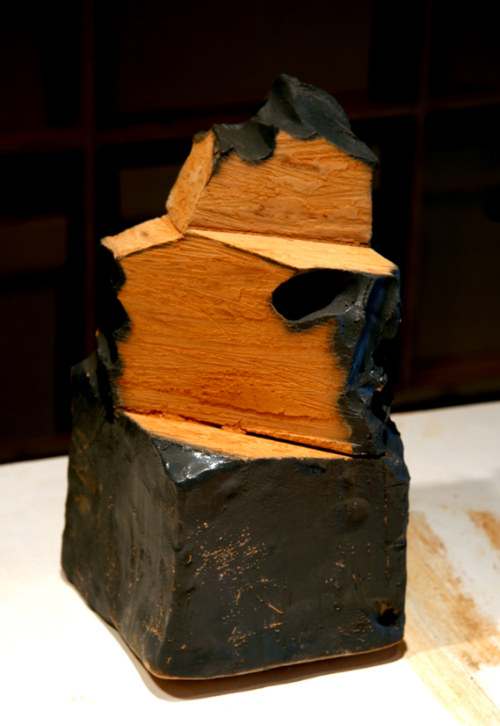 He fails. Attempts to graph the vigor of wild plum with the sweetness of the domesticated do not hold. His thumbprints on bits of unfired clay do not add up to a bloom. The joints of his efforts swell and leak. His plans collapse under the weight of their execution.
He fails. Attempts to graph the vigor of wild plum with the sweetness of the domesticated do not hold. His thumbprints on bits of unfired clay do not add up to a bloom. The joints of his efforts swell and leak. His plans collapse under the weight of their execution. 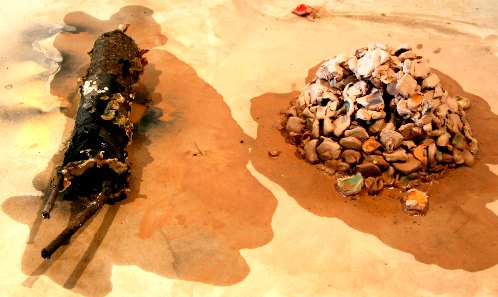

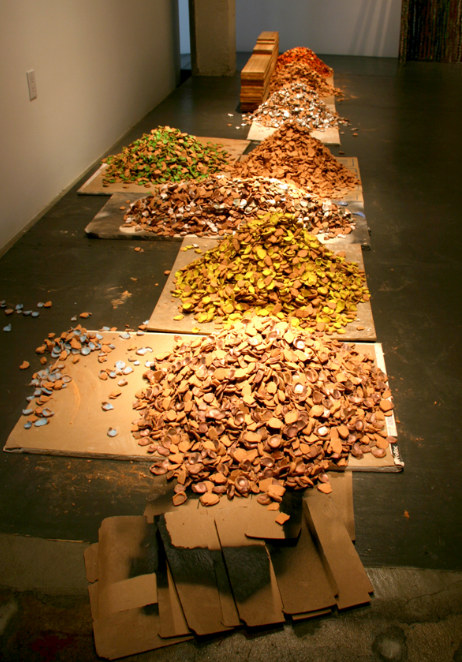 Nevertheless, he sets the table...
Nevertheless, he sets the table...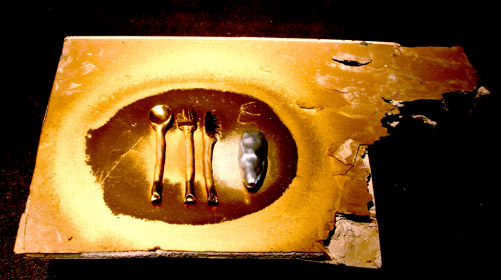 ...and sets the floor on fire with his desire.
...and sets the floor on fire with his desire.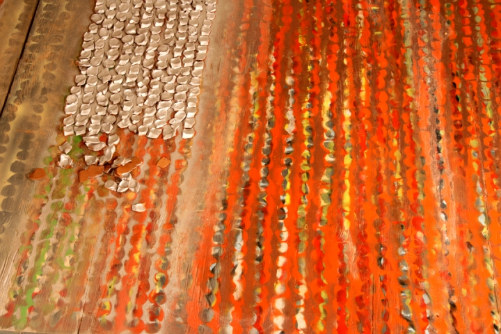 The Northwest has a robust tradition of handyman poetics, from Buster Simpson to Elias Hansen. Waterman stakes his handyman poetics after the fall, with no possibly of making it work. And yet he goes on, shouldering the weight of never-say-die America. While in search of a true thing within the bare, ruined choirs of bombastical idealism, he leaves behind him a rare and vulnerable beauty.
The Northwest has a robust tradition of handyman poetics, from Buster Simpson to Elias Hansen. Waterman stakes his handyman poetics after the fall, with no possibly of making it work. And yet he goes on, shouldering the weight of never-say-die America. While in search of a true thing within the bare, ruined choirs of bombastical idealism, he leaves behind him a rare and vulnerable beauty.Through Sept. 30.
No takers from the publishing world. (In the 1970s, the term "graphic novel" was not yet in use to signify a word/image combo, and the project was considered uncommercially weird.) After seven years of effort, Burroughs and McNeill gave up on it.
Burroughs was 56 when they met, McNeill 23.
McNeill:
In the first meeting he'd introduced me to the Reactive Mind, Reichs' Orgone theories, Randolph Hearst, "Nigger Killing" sheriffs, Mugwumps, the CIA, the Algebra of Need and a whole lot of other stuff I knew next to nothing about. I knew right away I was in at the deep-end, but of what, I had no idea. In time I realized I'd even got that wrong. 'Deep' in conventional space/time orientation implies that there's some kind of bottom. (more)Below, from Ah Pook, a "tornado of vigilantes sweeps up from the bible belt."
 Jan Hermann on the influence of The Unspeakable Mr. Hartt here.
Jan Hermann on the influence of The Unspeakable Mr. Hartt here.An eminent philosopher among my friends, who can dignify even your ugly furniture by lifting it into the serene light of science, has shown me this pregnant little fact. Your pier-glass or extensive surface of polished steel made to be rubbed by a housemaid, will be minutely and multitudinously scratched in all directions; but place now against it a lighted candle as a centre of illumination, and lo! the scratches will seem to arrange themselves in a fine series of concentric circles round that little sun. It is demonstrable that the scratches are going everywhere impartially and it is only your candle which produces the flattering illusion of a concentric arrangement, its light falling with an exclusive optical selection. These things are a parable. The scratches are events, and the candle is the egoism of any person now absent.
George Elliott, MiddlemarchTippit, Lazy Susan, 2010
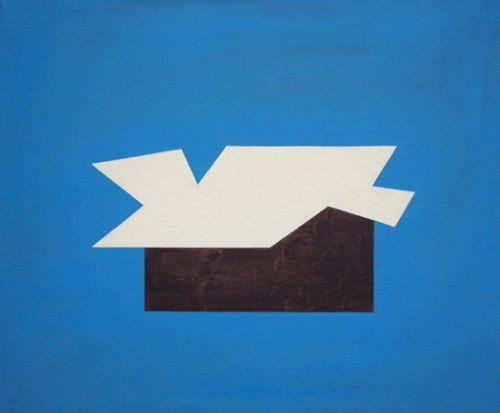 At Peregrine through Sept. 30.
At Peregrine through Sept. 30. Heidi Anderson, Grey Face Watercolor on paper 9" x 15" 2007
 Eric Yahnker, Bummed Bouquet, Graphite on paper, 52.5" x 65" 2009 (From Playboys and Killjoys at Ambach & Rice)
Eric Yahnker, Bummed Bouquet, Graphite on paper, 52.5" x 65" 2009 (From Playboys and Killjoys at Ambach & Rice)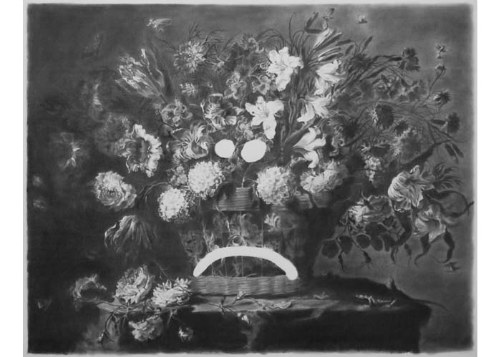
Barbara Noah, Earth As Bowling Ball II, Oil on photo emulsion on linen, 72" x 72" From Happy Hour installation
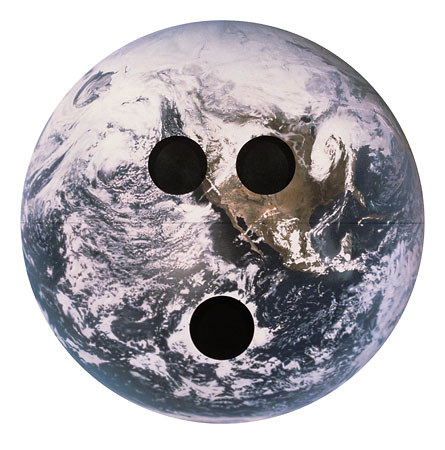
Yahnker A Full Plate, 2010. Found Books & Shelf
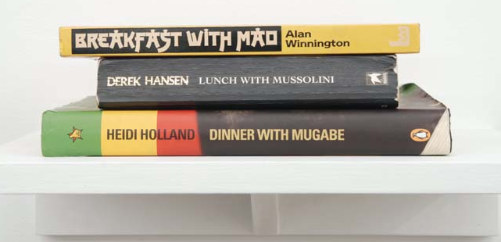 Yahnker is one of five artists in Playboys & Killjoys at Ambach & Rice. Its title derives from Harry Levin's idea that comedians can be divided into those categories. Playboys we laugh with, killjoys we laugh at.
Yahnker is one of five artists in Playboys & Killjoys at Ambach & Rice. Its title derives from Harry Levin's idea that comedians can be divided into those categories. Playboys we laugh with, killjoys we laugh at. I'm not sure either applies. Art rarely provides hilarity. The jokes it features are more of a nudge, a knock or a confoundment. They revel in displacement, undermine the expected and charm us with deliberately false cheer. It's possible to appreciate them without cracking a smile, let alone laughing.
William Sloane Coffin once observed that the Bible is like a mirror. "If an ass peers in, we can't expect a prophet to peer back at him." Yahnker whited-out everything in his Bible but letters that sequentially spell out "Beegees." It's the first time I looked in a Bible and thought of Saturday Night Fever.
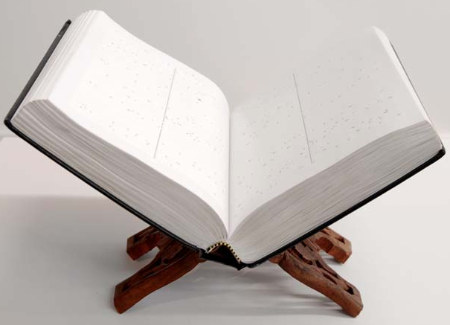 Jokes repeated lose their humor. The crack and curdle, become red in the face, fall flat, get no respect. Depending on the teller, however, the stale can rise again, acquiring a faint patina of horror.
Jokes repeated lose their humor. The crack and curdle, become red in the face, fall flat, get no respect. Depending on the teller, however, the stale can rise again, acquiring a faint patina of horror.Sara Greenberger Raffery Rodney, 2009 C-print.
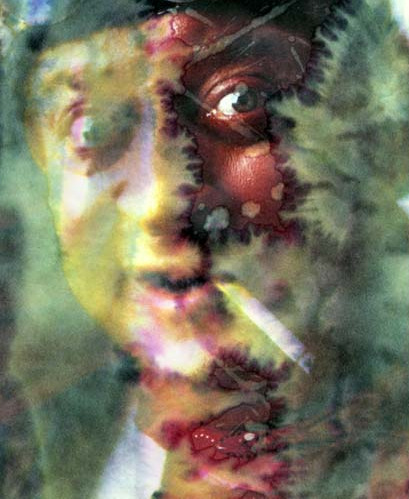 Remember those boys in seventh grade who inked battles in their notebooks? One of them grew up to be Raymond Pettibon. The arrested development of his content glows inside the fluid grace of his delivery.
Remember those boys in seventh grade who inked battles in their notebooks? One of them grew up to be Raymond Pettibon. The arrested development of his content glows inside the fluid grace of his delivery.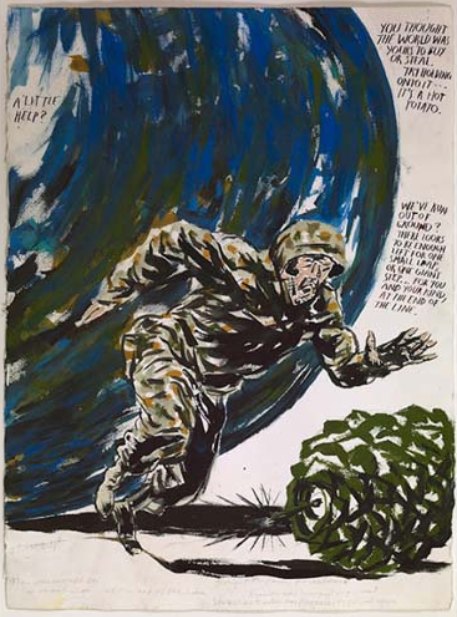 Air guitar, kitchen version: Greenberger Rafferty, Testing 1-V, 2009 (Microphone stand and baster, whisk, slotted spoon and ice-cream scoop.) Detail
Air guitar, kitchen version: Greenberger Rafferty, Testing 1-V, 2009 (Microphone stand and baster, whisk, slotted spoon and ice-cream scoop.) Detail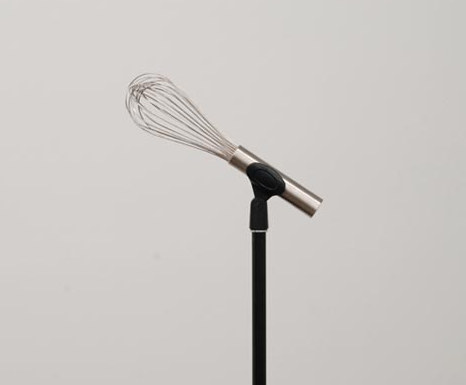 Pickles are never the star. (Erwin Wurm, Untitled (pickle) 2009 Cast and hand painted acrylic resin & pedestal)
Pickles are never the star. (Erwin Wurm, Untitled (pickle) 2009 Cast and hand painted acrylic resin & pedestal)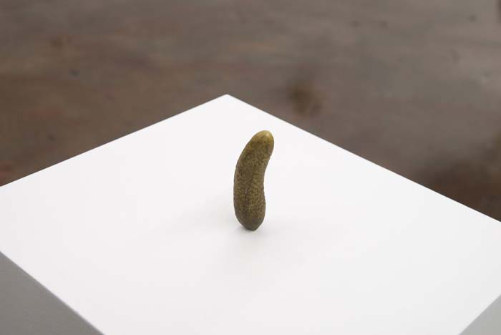 If Markus Vater is not working at The New Yorker, I can't imagine why.
If Markus Vater is not working at The New Yorker, I can't imagine why.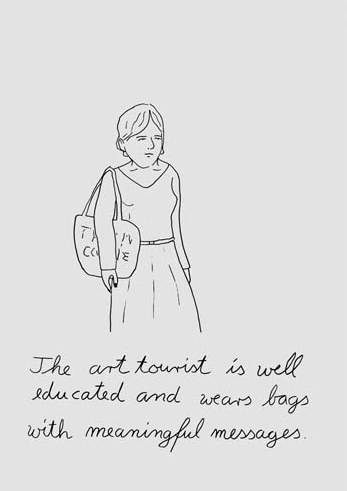 Through Sept. 19.
Through Sept. 19.Bennett: a mosquito, my libido, hello Pen on cardboard. 20 x 3 x .25 in. $50
.
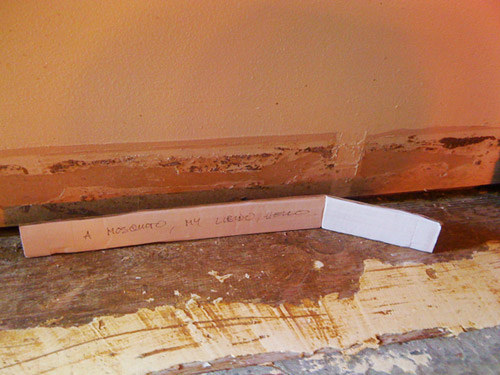 Baxter: Glass, sand, sterling silver, African wonder stone. 14 x 13 x 10 in. $475
Baxter: Glass, sand, sterling silver, African wonder stone. 14 x 13 x 10 in. $475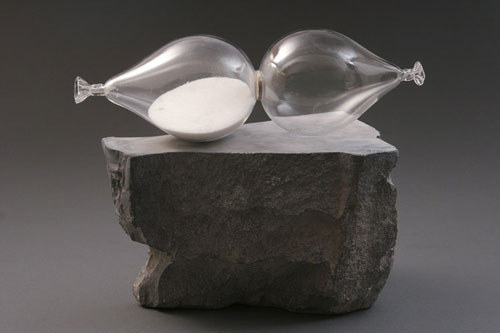 Nyland: Ceramic. 2.5 x 5 x 7 in. $25
Nyland: Ceramic. 2.5 x 5 x 7 in. $25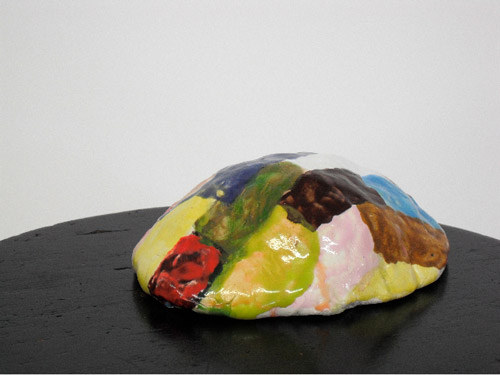 Veltkamp: Plaster Bunny Plaster and tint. 10 x 8 x 6 in $25 (Also available in chocolate.)
Veltkamp: Plaster Bunny Plaster and tint. 10 x 8 x 6 in $25 (Also available in chocolate.)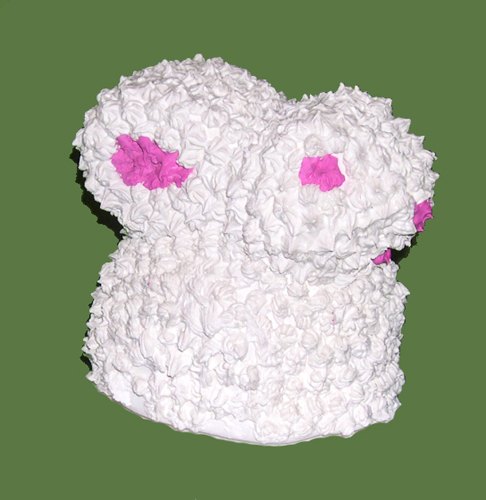
Burns, Dahlias
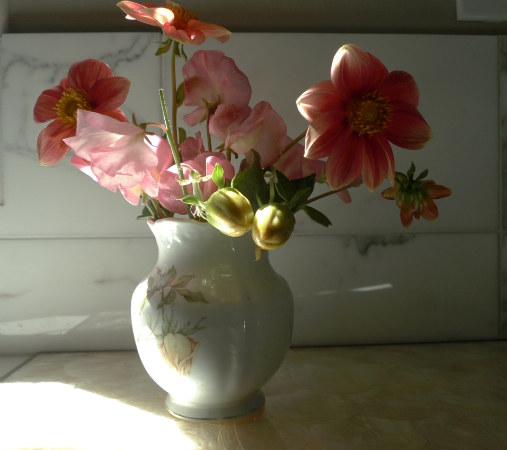
And this just in, from the Denver airport, Burns' idea of a snapshot.
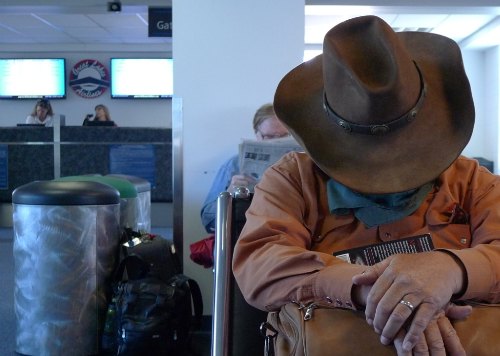

Forgive me for speaking ill of the dead, but I always thought that Abbie Hoffman was a phony, an unethical exploiter, and a plagiarist. Try reading Ringolevio by Emmett Grogan for an eye-opener about Hoffman and Leary and the rest of those professional media manipulators.Unlike, say, the blissful reaction to Tom Brokaw's The Greatest Generation, those praising the student activists from late 1960s meet stiff resistance. Even the activists from the mid-1960s disapproved of those who came later. Mario Savio was serious in the face of serious issues. Frolic disgusted him.
Sure, I was only a street kid with barely a ninth grade education but even I could see beyond their phony brand of fluff. There is no nostalgia in my mind for those guys, just memories of the damages their selfish hi-jinks caused They were preeminent A-Holes of the very first order.
Hoffman was anti-war with bells on. Confronted by a bad war and everything The Greatest Generation chose to ignore (racism, sexism and homophobia), he danced at his revolution like a class clown with a microphone. What the Wife of Bath claimed for herself he could claim, that he had the world in his time.
But Lord Jesus! When I do remember meIn defense of Hoffman, I won't say he was right about everything although I think he was. I'll say he was young.
Upon my youth and on my jollity
It tickles me about my heart's deep root.
To this day does my heart sing in salute
That I have had my world as in my time.
Andrew Marvell:
Now therefore, while the youthful hueHe sported and he stood up. Was he phony? Only in the eyes of those seeking consistency. An unethical exploiter? Hell no. A plagiarist? Note the title of his book. He was a property-is-theft kind of guy. It isn't good for anyone's character to be so right as a teenager. Of course it went to his head. Obnoxious and charming at the same time, he never lost faith that America could one day live up to its own ideals. His mistake was that he wanted that happy time to be his time and was crushed by the country's wide, long swing to the right.
Sits on thy skin like morning dew,
And while thy willing soul transpires
At every pore with instant fires,
Now let us sport us while we may...
Where did he get his faith in justice? From the Civil Rights Movement, and from reading Allen Ginsberg.
America when will we end the human war?
Go fuck yourself with your atom bomb.
I don't feel good don't bother me.
I won't write my poem till I'm in my right mind.
America when will you be angelic?
When will you take off your clothes?
When will you look at yourself through the grave?
When will you be worthy of your million Trotskyites?
America why are your libraries full of tears?
America when will you send your eggs to India?
I'm sick of your insane demands.
When can I go into the supermarket and buy what I need with my good looks?
America after all it is you and I who are perfect not the next world.
Your machinery is too much for me.
You made me want to be a saint.
You made me want to be a saint....Any Catholic could have told him, saints tend to come to bad ends, and their grace co-opted to serve a corrupt institution. Because Hoffman could not be remade in the image of the state, he has been rejected, even by those who should know better.
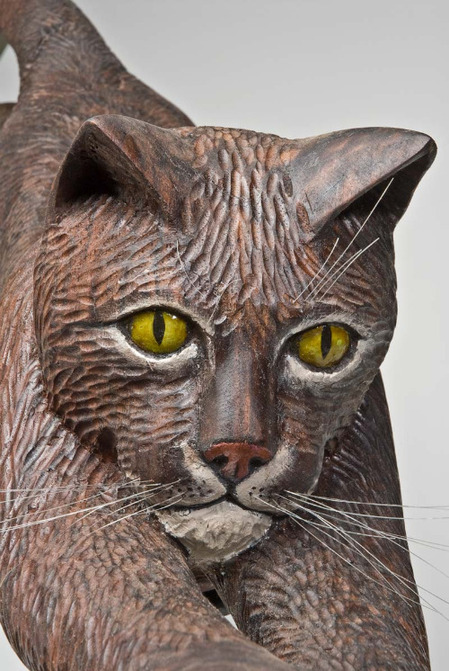 Dead muses...Peregrine Honig
Dead muses...Peregrine Honig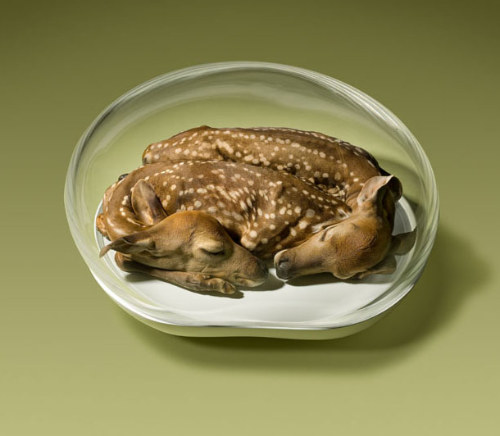 The world inside the world...Jennifer Zwick
The world inside the world...Jennifer Zwick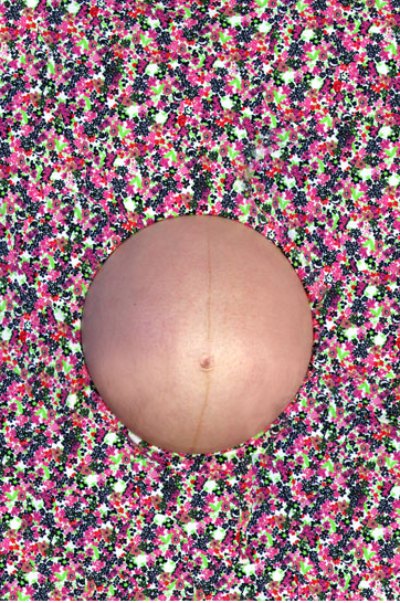 The past that rots inside your head....Liz Magor
The past that rots inside your head....Liz Magor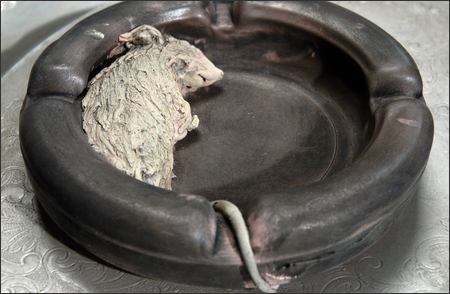 The last good kiss you had was years ago...Joey Veltkamp- 1977 (In Blue)
The last good kiss you had was years ago...Joey Veltkamp- 1977 (In Blue)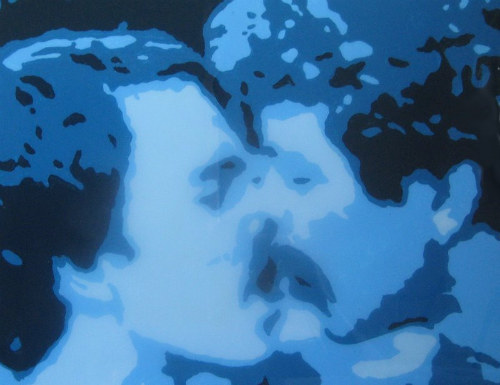 Decorating an ordinary disaster...Liz Magor
Decorating an ordinary disaster...Liz Magor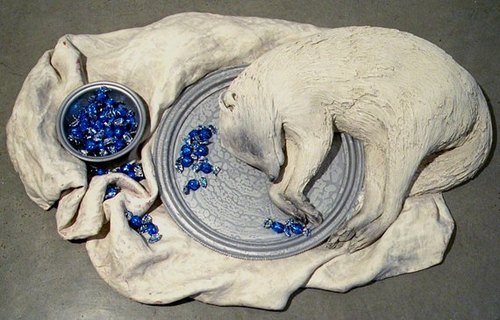 Up and at 'em....Scott Wayne Indiana
Up and at 'em....Scott Wayne Indiana 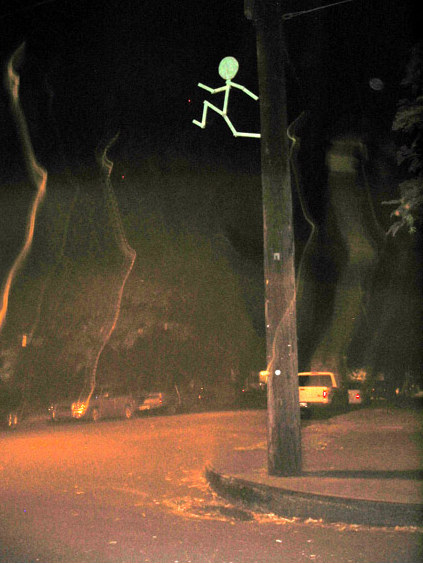 The pea prevailed....Alice Tippit - The Princess
The pea prevailed....Alice Tippit - The Princess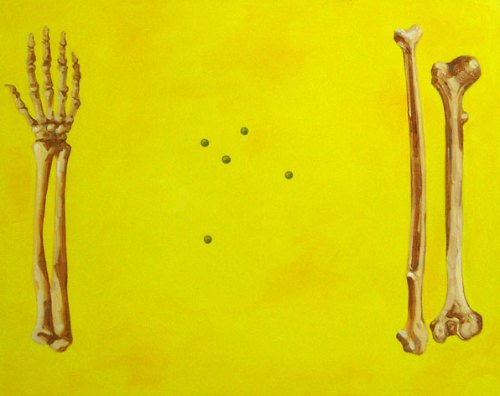 Animal instinct....Akio Takamori
Animal instinct....Akio Takamori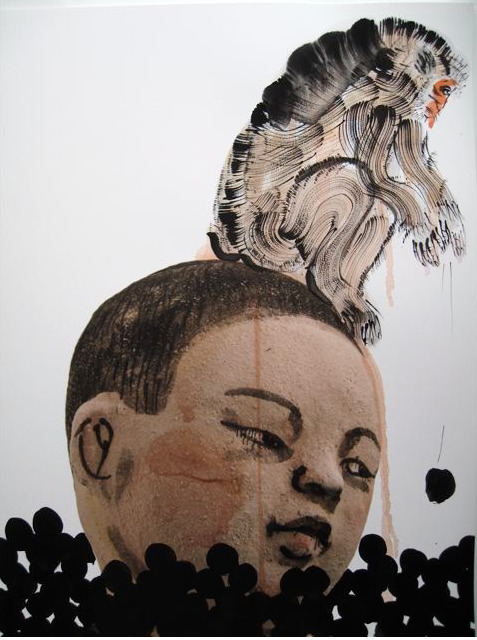 Strange fruit, medieval edition....Claire Cowie
Strange fruit, medieval edition....Claire Cowie Every nerve on end...Jason Teraoka
Every nerve on end...Jason Teraoka Before he knows it, before he hits the ground....Grant Barnhart
Before he knows it, before he hits the ground....Grant Barnhart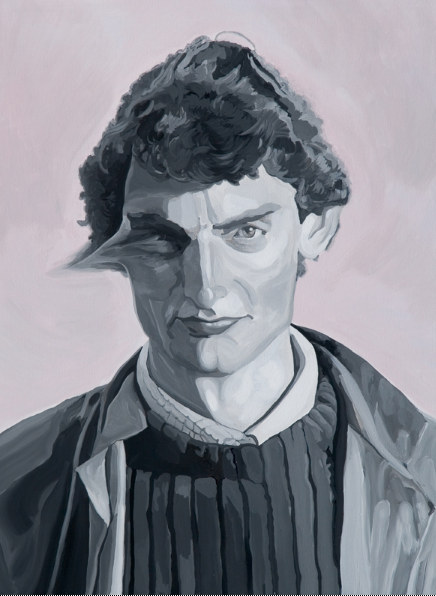
With your fingers probe the holiness of your body and see that it was meant to live. Your body is just one in a mass of cuddly humanity.
Abbie Hoffman, Steal This Book
Abbie Hoffman was the stand-up comedian of the Anti-War Movement, beloved by everyone who appreciated high jinks in their dogma, freedom of thought in their self-evident truths. He had the misfortune of being entirely correct about racism, sexism, homophobia, the war machine, environmental catastrophe and economic injustice. His wit made him prominent, and his prominence made him a target.
(Image via)
 He is no longer with us, but part of his legacy is a hilarious blueprint of his ideas titled Steal This Book, published in 1971.
He is no longer with us, but part of his legacy is a hilarious blueprint of his ideas titled Steal This Book, published in 1971.Bill Hartel:
Abbie Hoffman couldn't get a anyone to publish Steal This Book -- thirty publishers turned it down. When the book was released, bookstores wouldn't carry it. Newspapers, TV and radio all refused to run advertisements. But despite these set backs, Steal This Book found its way on to the Best Seller list in 1971.
The book sold more than quarter of a million copies between April and November 1971. So where are all those copies? The Chicago Public Library doesn't have one. Although the New York Public Library has 9,993,000 books, it hasn't had a copy of Steal This Book for twenty years. The Library of Congress, the world's largest library with 20 million books, doesn't have one either.
After he published Fuck The System and Woodstock Nation, Abbie was kept informed of every sort of rip off scam. He saw that this collection of ways to beat the system could be made into a catalog for his Yippie movement "Sort of a tongue in cheek parody of the American 'How To' manuals that were so popular at the time," said Abbie. But Steal This Book is much more than just a manual of survival in the counter culture world -- a "Hip Boy Scout Handbook" as the New York Times called it. In between the chapters on "Free Food" and "First Aid for Streetfighters,"
Abbie's thoughts on freedom, liberty, responsibility, self reliance shine through. His idealism echoes the sentiments of Henry Thoreau and Thomas Paine. Abbie's former publisher, Random House, rejected the book, as did thirty other established publishers. Not to be so easily thwarted, he collected $15,000 from friends and set up Pirate Editions. Book distributors refused to distribute the work, so Abbie arranged with Grove Press to distribute Steal This Book provided Abbie assume all the liability for the book. Abbie tried unsuccessfully to place advertisements for the book in the media (with the lone exception of the San Francisco Chronicle). Although the book was on the New York Times Best Seller's list, they wouldn't carry his ads.In spite of all that, Hoffman scored a best seller. But unlike a predecessor such as, for instance, Thoreau's Walden, it is hard to find and unlikely to be taught in universities.
Enter the world of open source. Anyone can steal this book by downloading it for free.
(Library of Congress number 72-157115 (stolen from Library of Congress) copyright ©1971 PIRATE EDITIONS) Abbie lives! (more)
Cameron on Lawrimore Project:
The space is huge, and, more importantly, has been broken up by the Seattle firm Lead Pencil Studios into a cluster of rooms, each of which has an extremely precise character. Tall ceilings and indirect natural light are balanced by a renovation that leaves just enough of the original building's quirks intact so that walking into Lawrimore feels like stepping into every artist's ideal vision of an art gallery.That gallery, now demised, was 5,000 square feet. Last night, Scott Lawrimore opened its replacement - a white box storefront in Pioneer Square, at 117 S. Main Street. Blink and you'll miss it. Spanning no more than 150 square feet, it could fit into his old restroom with space left over for toilet and sink.
How does it look? Lovely. Radically cool. White-on-white-in-white with high ceilings and crystalline light. In a corner is a built-in bench with a Beuysian gray felt pad. Lawrimore's calling that bench his office.
Is he kidding? He's gotta be kidding. I don't think he's kidding. The new is everything the old wasn't- modest, mute, reductive, clean, cheap.
Isaac Layman had the last show in the old space and has the first in the new one. Instead of his large, pellucid previous, he offers fragmentary gestures and a few props lined up along the wall.
Seen in person, the unphotographable image below looks like a watercolor of a birch tree smeared on its edge with faint blue and pink. Instead, it's blank photo paper he rubbed on the corner of a room.
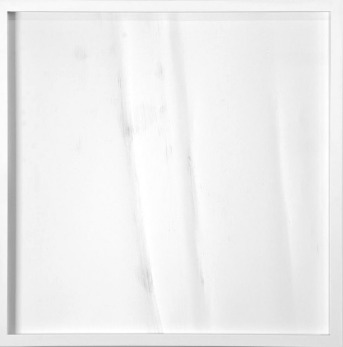 Lawrimore opened in 2006. Is he planning to spend his next four years in this closet? Not bloody likely. As an intermission, however, it's a score.
Lawrimore opened in 2006. Is he planning to spend his next four years in this closet? Not bloody likely. As an intermission, however, it's a score.About
Blogroll
AJ Blogs
AJBlogCentral | rssculture
About Last Night
Terry Teachout on the arts in New York City
Terry Teachout on the arts in New York City
Artful Manager
Andrew Taylor on the business of arts & culture
Andrew Taylor on the business of arts & culture
blog riley
rock culture approximately
rock culture approximately
critical difference
Laura Collins-Hughes on arts, culture and coverage
Laura Collins-Hughes on arts, culture and coverage
Dewey21C
Richard Kessler on arts education
Richard Kessler on arts education
diacritical
Douglas McLennan's blog
Douglas McLennan's blog
Dog Days
Dalouge Smith advocates for the Arts
Dalouge Smith advocates for the Arts
Flyover
Art from the American Outback
Art from the American Outback
lies like truth
Chloe Veltman on how culture will save the world
Chloe Veltman on how culture will save the world
Life's a Pitch
For immediate release: the arts are marketable
For immediate release: the arts are marketable
Mind the Gap
No genre is the new genre
No genre is the new genre
Performance Monkey
David Jays on theatre and dance
David Jays on theatre and dance
Plain English
Paul Levy measures the Angles
Paul Levy measures the Angles
Real Clear Arts
Judith H. Dobrzynski on Culture
Judith H. Dobrzynski on Culture
Rockwell Matters
John Rockwell on the arts
John Rockwell on the arts
State of the Art
innovations and impediments in not-for-profit arts
innovations and impediments in not-for-profit arts
Straight Up |
Jan Herman - arts, media & culture with 'tude
Jan Herman - arts, media & culture with 'tude
dance
Foot in Mouth
Apollinaire Scherr talks about dance
Apollinaire Scherr talks about dance
Seeing Things
Tobi Tobias on dance et al...
Tobi Tobias on dance et al...
jazz
Jazz Beyond Jazz
Howard Mandel's freelance Urban Improvisation
Howard Mandel's freelance Urban Improvisation
ListenGood
Focus on New Orleans. Jazz and Other Sounds
Focus on New Orleans. Jazz and Other Sounds
Rifftides
Doug Ramsey on Jazz and other matters...
Doug Ramsey on Jazz and other matters...
media
Out There
Jeff Weinstein's Cultural Mixology
Jeff Weinstein's Cultural Mixology
Serious Popcorn
Martha Bayles on Film...
Martha Bayles on Film...
classical music
Creative Destruction
Fresh ideas on building arts communities
Fresh ideas on building arts communities
The Future of Classical Music?
Greg Sandow performs a book-in-progress
Greg Sandow performs a book-in-progress
Overflow
Harvey Sachs on music, and various digressions
Harvey Sachs on music, and various digressions
PianoMorphosis
Bruce Brubaker on all things Piano
Bruce Brubaker on all things Piano
PostClassic
Kyle Gann on music after the fact
Kyle Gann on music after the fact
Sandow
Greg Sandow on the future of Classical Music
Greg Sandow on the future of Classical Music
Slipped Disc
Norman Lebrecht on Shifting Sound Worlds
Norman Lebrecht on Shifting Sound Worlds
The Unanswered Question
Joe Horowitz on music
Joe Horowitz on music
publishing
book/daddy
Jerome Weeks on Books
Jerome Weeks on Books
Quick Study
Scott McLemee on books, ideas & trash-culture ephemera
Scott McLemee on books, ideas & trash-culture ephemera
theatre
Drama Queen
Wendy Rosenfield: covering drama, onstage and off
Wendy Rosenfield: covering drama, onstage and off
visual
Aesthetic Grounds
Public Art, Public Space
Public Art, Public Space
Another Bouncing Ball
Regina Hackett takes her Art To Go
Regina Hackett takes her Art To Go
Artopia
John Perreault's art diary
John Perreault's art diary
CultureGrrl
Lee Rosenbaum's Cultural Commentary
Lee Rosenbaum's Cultural Commentary
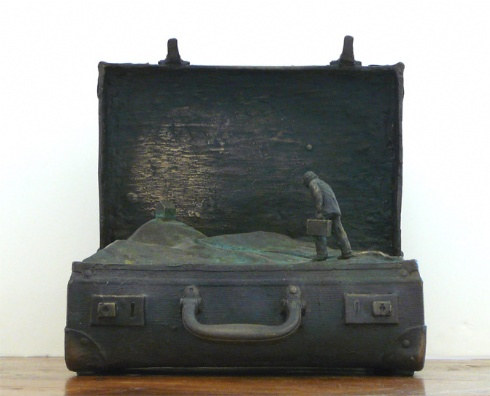
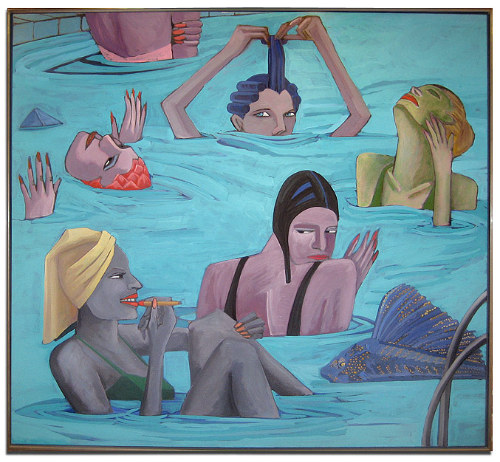
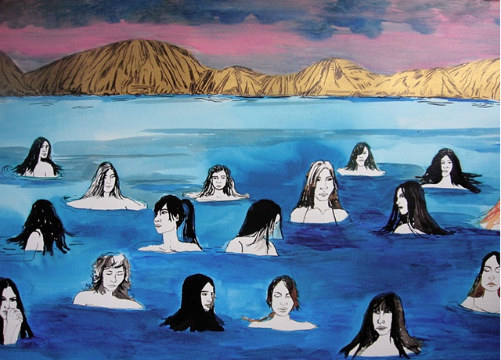
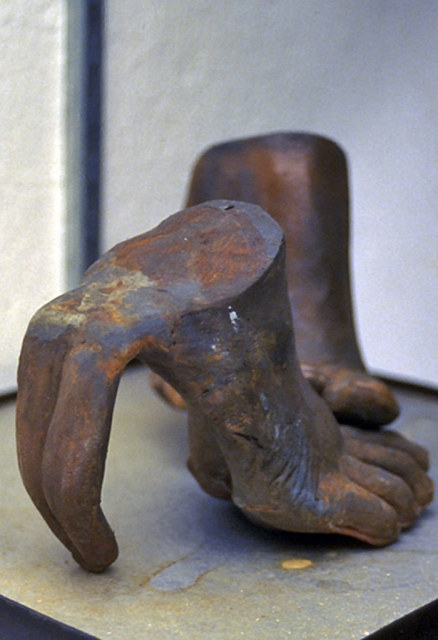
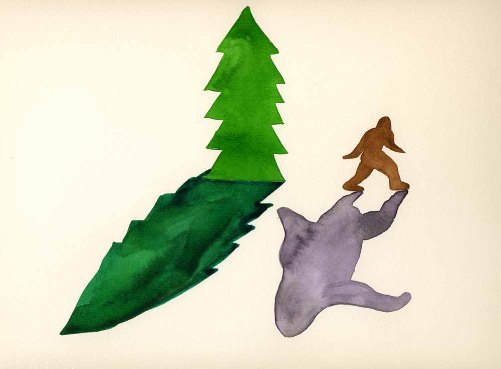
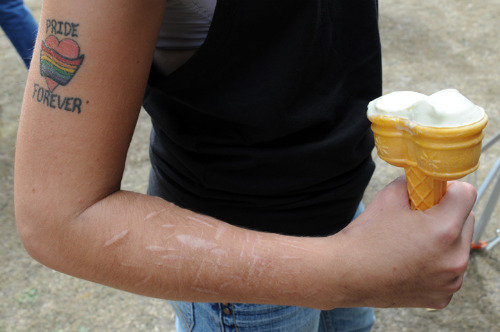
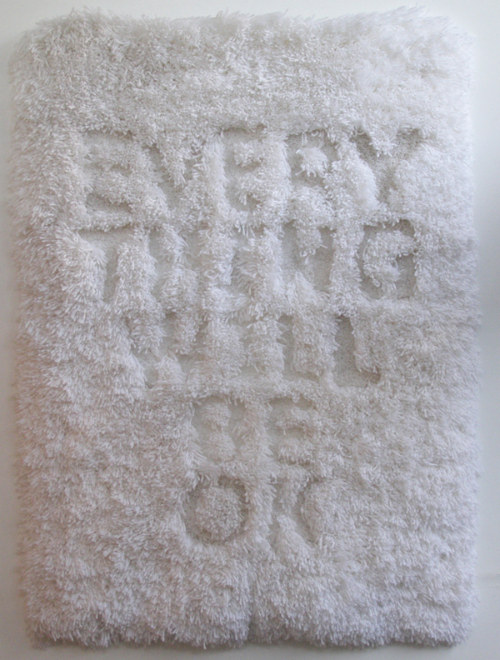

Recent Comments